
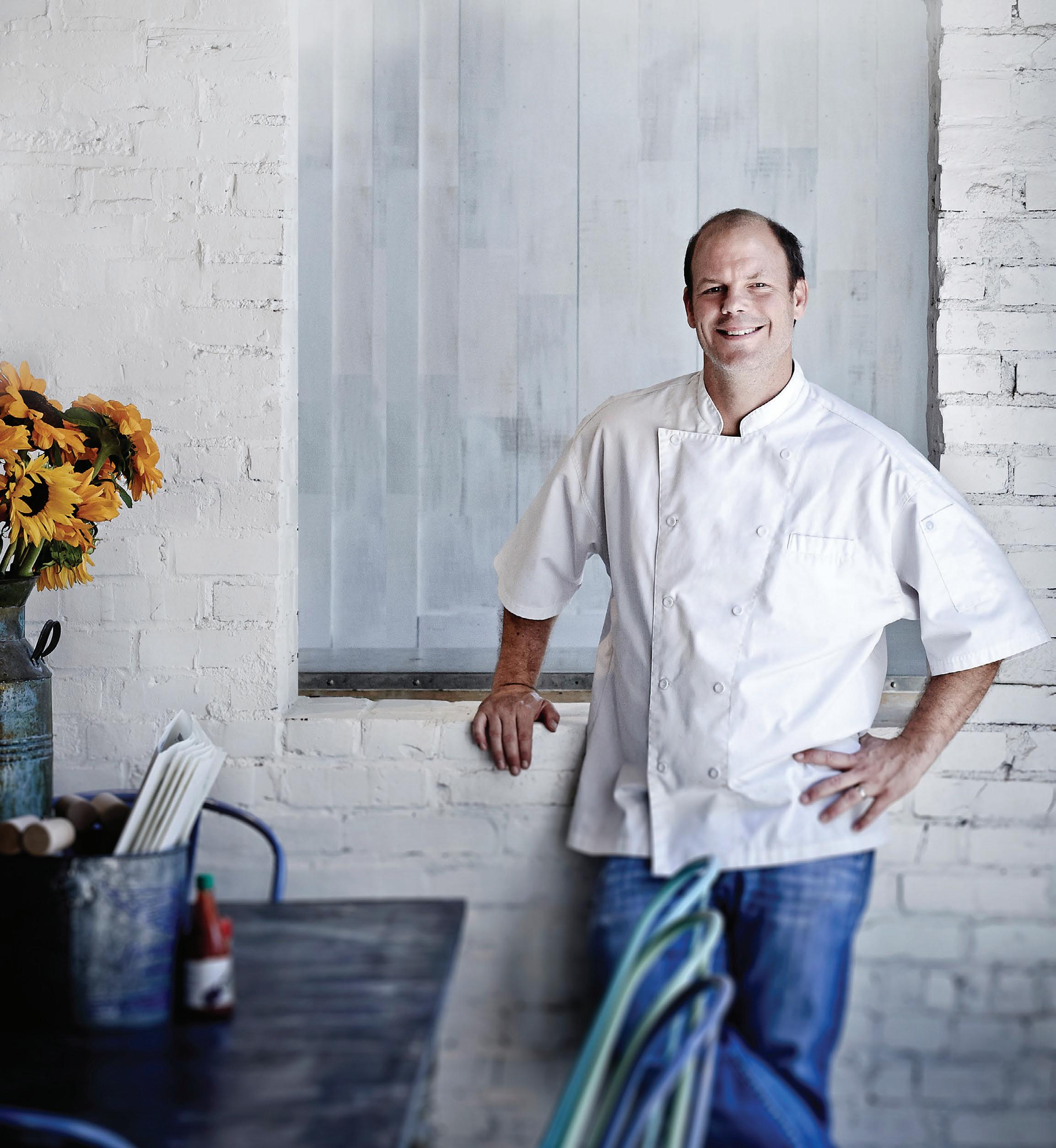
FREE, S E pt E mb ER 2014 The Secre T Fig Society p. 43 Sicilian Sa S himi p. 35 The mos T an T icipa T ed restaurant of the year plus 10 other places you don't want to miss g uide to d rinking (Flip T he magazine over.)
14
Kevin Nashan, chefowner of newly opened Peacemaker Lobster & Crab Co., p.
Celeb chef Tyler Florence headlines Taste of St. Louis p. 19

2 I SAUCE MAGAZINE I saucemagazine.com September 2014

saucemagazine.com I SAUCE MAGAZINE I 3 September 2014



September is the best time to drink
PUBLISHER
EXECUTIVE EDITOR
ART DIRECTOR
MANAGING EDITOR
MANAGING EDITOR, DIGITAL
SPECIAL SECTIONS EDITOR
FACT CHECkER
PROOFREADER
PRODUCTION DESIGNER
EDIBLE WEEkEND EDITOR
CONTRIBUTING PHOTOGRAPHERS
CONTRIBUTING ILLUSTRATOR
CONTRIBUTING WRITERS
Allyson Mace
Ligaya Figueras
Meera Nagarajan
Garrett Faulkner
Catherine k lene
Garrett Faulkner
Rosa Heyman
Emily Lowery
Michelle Volansky
Catherine k lene
EVENTS COORDINATOR LISTINGS MANAGER
ADVERTISING SALES MANAGER
ACCOUNT EXECUTIVES
ADVERTISING ACCOUNTS COORDINATOR INTERN
to place advertisements in Sauce magazine contact the advertising department at 314.772.8004 or sales@ saucemagazine.com.
To carry Sauce Magazine at your store, restaurant, bar or place of business Contact Allyson Mace at 314.772.8004 or amace@saucemagazine.com.
All contents of Sauce Magazine are copyright ©2001-2014 by Bent Mind Creative Group, LLC. The Sauce name and logo are both registered to the publisher, Bent Mind Creative Group, LLC. Reproduction or other use, in
A rye Manhattan on my balcony
Jonathan Gayman, Ashley Gieseking, Elizabeth Jochum, Elizabeth Maxson, Greg Rannells, Carmen Troesser
Vidhya Nagarajan
Glenn Bardgett, Matt Berkley, Julie Cohen, Garrett Faulkner, Ligaya Figueras, Nina Furstenau, Eric Hildebrandt, kellie Hynes, Byron kerman, Jamie kilgore, Ted kilgore, Cory king, Catherine k lene, Anne Marie Lodholz, Dan Lodholz, Meera Nagarajan, Matt Obermark, Michael Renner, Dee Ryan, Stacy Schultz
Rebecca Ryan
Rebecca Ryan
Allyson Mace
Apple everything –especially my boyfriend's house-made Washington apple cocktail Farmhouse ales
Rachel Gaertner, Jill George, Jackie Wagner
Jill George
Grace kennedy
whole or in part, of the contents without permission of the publisher is strictly prohibited. While the information has been compiled carefully to ensure maximum accuracy at the time of publication, it is provided for general guidance only and is subject to change. The publisher cannot guarantee the accuracy of all information or be responsible for omissions or errors. Additional copies may be obtained by providing a request at 314.772.8004 or via mail. Postage fee of $2 will apply.
Sauce Magazine is printed on recycled paper using soy inks.
ediTorial policieS The Sauce Magazine mission is to provide St. Louis-area residents and visitors with unbiased, complete information on the area’s restaurant, bar and entertainment industry. Our editorial content is not influenced by who advertises with Sauce Magazine or saucemagazine.com.
Our reviewers are never provided with complimentary food or drinks from the restaurants in exchange for favorable reviews, nor are their identities as reviewers made known during their visits.
SEND A $25 CHECK TO: SAUCE MAGAZINE – SUBSCRIPTIONS for a 12-month subscription 1820 Chouteau • St.
4 I SAUCE MAGAZINE I saucemagazine.com September 2014 SAUCE MAGAZINE
available for home delivery
CITY STATE ZIP
subscriptions are
NAME STREET ADDRESS
SEPTEMBER
Louis, MO 63103
2014 • VOLUME 14, I SSUE 9
____.


saucemagazine.com I SAUCE MAGAZINE I 5 September 2014




6 I SAUCE MAGAZINE I saucemagazine.com September 2014 P H oto by E lizab E t H J oc H u M



(Flip the magazine over to read the Guide to Drinking.) Our local sommeliers know their wine. Read "Super Somms" (p. 18) to find out how Brandon Kerne, Patricia Wamhoff and Andrey Ivanov (pictured, from left to right, on the Guide to Drinking cover), along with other area wine wonks, are reaching for the sommelier's holy of holies: the title of master. Elsewhere in the Guide, we look at old-school bourbon, a literal beer cellar, what's trending in the beverage world and much more.
saucemagazine.com I SAUCE MAGAZINE I 7 September 2014 S ep Tember 2014 contents
P H oto by E lizab E t H J oc H u M cover details Kevin
Features 38 A-C Amping We Will go 5 easy recipes to make in the great outdoors by anne marie and dan lodholz 43 The SeCreT Fig SoCieT y how an ancient fruit took root in the midwest by nina furstenau 11 eAT ThiS Chicken Souvlaki from Go! Gyro! Go! 14 hiT liST 11 places to try this month editors' picks reviews 21 neW AnD noTABle Jax Café by michael renner 24 poWer lUnCh Que Sazon by byron kerman 27 nighTliFe The Hive by matt berkley dine & drink 29 A SeAT AT The BAr Four experts tell us what to sip, stir and shake by glenn bardgett, cory king, and ted and jamie kilgore 31 eliXir Best of barrel-aging by matt obermark 32 VegeTiZe iT Saag paneer by kellie hynes 35 mAKe ThiS Pasta sushi by dee ryan 50 STUFF To Do by byron kerman 52 WhAT i Do Nora Brady by ligaya figueras last course
Yellowfin tuna nachos at Jax Café p. 21
Nashan, chef-owner of newly opened Peacemaker Lobster & Crab Co. photo by greg rannells p. 14
letter from the editor

Among the children’s TV shows of my early years, Sesame Street is the one that has stayed with me into adulthood. I love the songs (so much that I own a guitar book of Sesame songs), the characters (Why can’t Twiddlebugs live in a flower box outside my window?) and the plot lines (for years we wondered whether Mr. Snuffleupagus was real or imagined). But the short videos on how things are made were the best. Remember the visit to the crayon factory? I still get mesmerized watching colored liquid wax stream into molds, harden, then roll down a conveyor belt to get labeled, sorted and packaged into a bright yellow box, the 64-count of which I prized most among my kiddie school supplies.


My latest assembly line preoccupation happens to be a manufacturing trend in the beverage world: mobile canning. More craft brewers are packaging their brews in cans, and for breweries that lack the space or don’t quite have the big bucks to install a fixed canning line, the solution is a simple phone call to a mobile canner. At 4 Hands Brewing Co., where I am in the photograph, owner Kevin Lemp has contracted Toucan Mobile Canning and iCan Solutions since April to put the brewery’s Contact High and Resurrected IPA into aluminum cans. Running at a rate of 40 cans per minute, it takes about 13 hours to move 100 barrels of beer into aluminum. Although 4 Hands will see a permanent canning line installed this month, other local breweries rely on a mobile operator too.
Kirkwood Station and Six Row also jumped onto the mobile canning bandwagon this spring, and three of Six Row’s beers – Sunshine Slowdown, Arch Nemesis Midnight and its flagship Whale ale – are now available in 16-ounce cans.
Using my hands to push empty beer cans down a chute was my poor attempt to help during a canning session at 4 Hands Brewing Co.
Mobile canning is just one recent development in the beverage world that affects our choices as consumers. In this month’s Guide to Drinking (Flip the magazine over to check it out.), we spotlight people and ideas behind the scenes in St. Louis that make your imbibing experience better – from a boisterous group of brewing industry insiders (who happen to be women) to studious sommeliers who have transformed studying for a cutthroat exam into something like Mister Rogers’ Neighborhood
While the Guide to Drinking is filled to the brim with beverage intel, this month’s main issue is replete with food news. A number of heavy-hitter restaurants have just opened doors, including chef-owner Kevin Nashan’s Peacemaker Lobster & Crab Co. (p. 14), which graces the magazine’s cover. Dan and Anne Marie Lodholz show us that overnight camping doesn’t have to mean Pop-Tarts in the morning and foil-wrapped potatoes at night (p. 38). And the fig, that divine fruit of fall, really does grow in our city (p. 43).
Summer ends this month, and your week-long beach vacation is now just a memory. But cheer up. As you read through the pages of Sauce, you’ll find plenty of reasons to come and play – whether at a bar, restaurant, campsite or in the comfort of your kitchen.
Cheers,
 Ligaya Figueras Executive editor
Ligaya Figueras Executive editor
Is there really a taste difference between cheap and expensive wines? What country produces the best value wines right now? Which wines are prime for tucking away in your cellar? And, in wine-speak, what the heck are “legs”? We’ll answer all these questions and more on this month’s Sound Bites. Super somms Andrey Ivanov and Patricia Wamhoff join Sauce executive editor Ligaya Figueras to uncork wine myths and discuss why now is a fine time to be drinking wine in St. Louis. tune in to st. louis Public radio 90.7 KWMU’s cityscape Friday, s ept. 12 at noon and 10 p.m.
8 I SAUCE MAGAZINE I saucemagazine.com September 2014
PH oto by J onat H an G ay M an



saucemagazine.com I SAUCE MAGAZINE I 9 September 2014 PH oto by J onat H an G ay M an





10 I SAUCE MAGAZINE I saucemagazine.com September 2014 PH oto by car ME n tro E ss E r
editors' picks
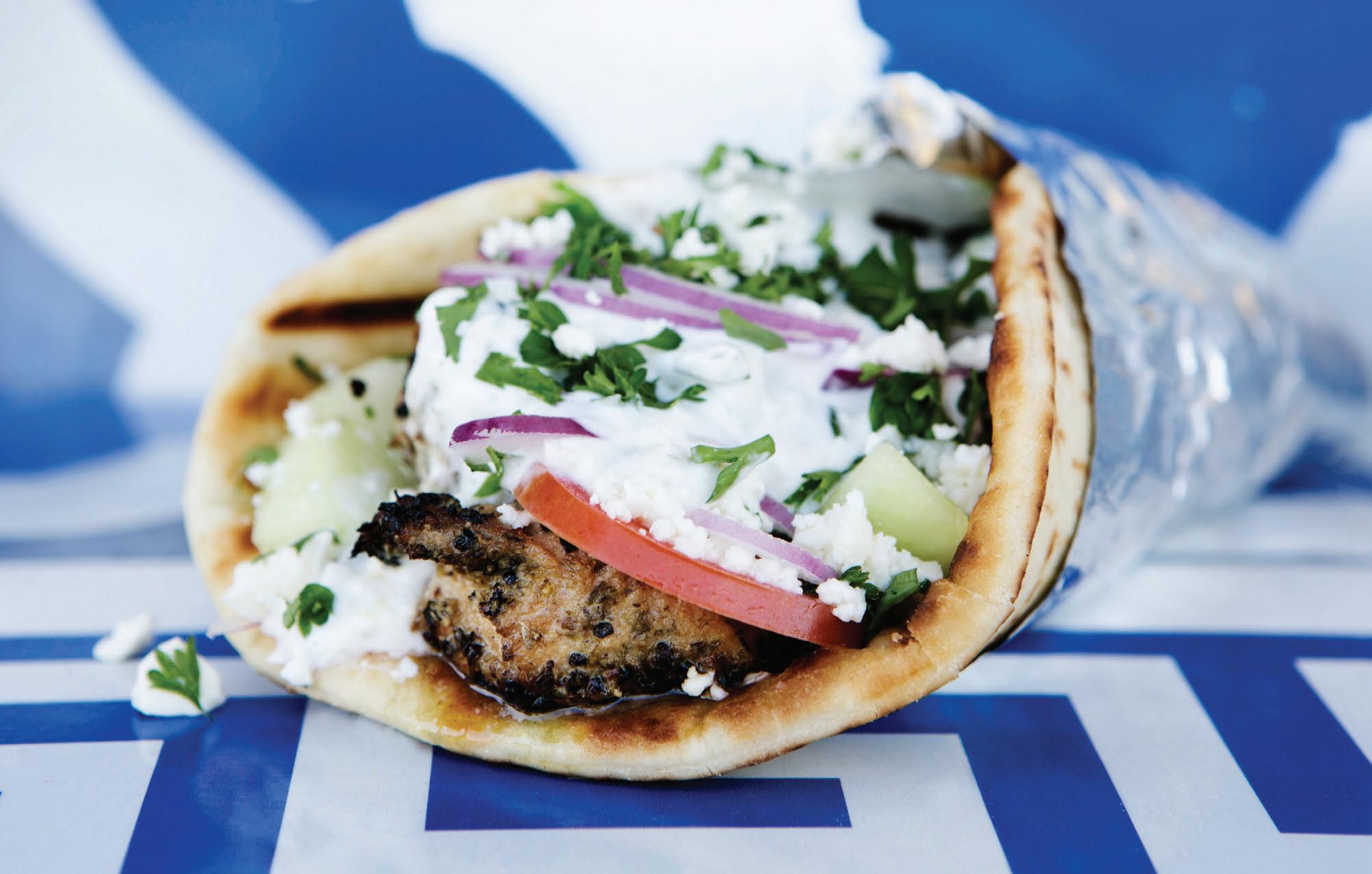
At Food Truck Friday, we always stop at GO! GYRO! GO! for the CHIC k EN SOUVLA k I GYRO. The chicken is super tender from a daylong marinade, grilled to perfection and stuffed into a warm pita along with tomato, cucumbers, red onion, a tangy house-made tzatziki and salty Greek feta. We add pickled banana peppers for a crunchy, spicy finish. There’s a lot wrapped inside this hand-held meal, but every bite is harmonious, and we guarantee that when you’re through with this gyro, you’ll nap like a real Greek.
saucemagazine.com I SAUCE MAGAZINE I 11 September 2014 eat this PH oto by car ME n tro E ss E r
G O ! G YRO ! G O !, 314.496.3970, @ GOGYROGO, GOGYROGOSTL COM




12 I SAUCE MAGAZINE I saucemagazine.com September 2014

saucemagazine.com I SAUCE MAGAZINE I 13 September 2014
hit list
11 new places to try this month
if it’s new and different you want, you’ll easily get your fill this month. restaurants and bars have been opening left and right, not to mention food trucks, an ultramodern ice cream shop and an international grocery store. a re you ready, food-obsessed st. louis? We’ve got 11 – yes, 11! – places you need to check out this month.

14 I SAUCE MAGAZINE I saucemagazine.com September 2014
P H oto by G r EG rann E lls P H oto by G r EG rann E lls
oysters on the half-shell at peacemaker lobster & crab co.

Crab, lobster, oyster and other creatures of the sea star at chef-owner Kevin Nashan’s new restaurant in the old Niche (and Taste) space in Benton Park, just a couple blocks down from his Sidney Street Cafe. Peacemaker was the original name for an early version of the fried oyster po’boy, and Nashan’s dishes celebrate expressions of Cajun cuisine, from the Acadian coast all the way to NOLA. Seafood lovers can get their fix for fish food via a raw bar, as well as fare that’s boiled, steamed or stuffed inside a toasted, New Englandstyle split-top bun. Don’t miss the
shrimp po’boy with nicely breaded fried shrimp and remoulade or the crab roll, which holds lump crab meat and a light aioli brightened with citrus. Finish with a snow cone drenched in a housemade syrup or a slice of seasonal pie. Brick, reclaimed wood and sundry light fixtures lend a waterfront seafood shack ambiance to the 120-seat place that’s been wildly anticipated, even among national media; come early or expect to wait.
1831 Sidney St., St. Louis, 314.772.8858, peacemakerstl.com
Health-conscious food truck lovers have a delicious new lunchtime option. Harvest Xpress strives to use as many organic, non-GMO products as possible to make its paninis, pitas, wraps and salads. Meats are naturally raised, hormonefree and tasty, particularly in the Cuban sandwich, a hearty helping of roast pork, ham, pickles and mustard on house-made focaccia. Harvest Xpress’ fresh produce is on display in the California Hipster Wrap, packed with spring greens, tomatoes, red onion, fresh avocado, chicken, turkey bacon and avocado ranch dressing.
636.244.1115, Facebook: HarvestXpress Foodtruck, Twitter: @harvestxpress
days (when it also operated as a bar by the same name). Yet under ownership that includes The Royale’s Steve Smith and seasoned nightlife writer Thomas Crone, what at first appears worn and dated is suddenly cool and worth appreciating. Take in the shag carpeting covering the bar front, the linoleum flooring and the collection of Tick Tock’s 30-year-old sports trophies as you enjoy a beer. There are 11 brews (mainly craft) on tap and nearly two dozen in bottles or cans. The bar is stocked with premium spirits and for the lost, a menu board lists a handful of house specials like a rye Manhattan or a Gin Rickey. Hungry? Tick Tock doesn’t have a kitchen, but its neighbor (just through the doorway), Steve’s Hot Dogs, does. Order a dog (a vegan version debuts this month) or fill up on items from its new mac-n-cheese menu.
3459 Magnolia ave., st. louis, 314.776.6929, theticktocktavern.com
Pyro Pizza is part engineering marvel, part mobile food venue. The truck houses a custom wood-fired pizza oven that cranks the temps to a blistering 800 degrees, turning house-made dough into a perfectly toothsome 8-inch crust in 2 minutes. We swooned over the pesto chicken pizza decked with pungent pesto, juicy chicken, spinach, onion, hunks of fresh mozzarella and shredded mozzarella for good measure. The hungry crowd should dig into the barbecue chicken pizza, featuring a tangy barbecue sauce topped with chicken, bacon, pineapple, cheddar and mozzarella.
314.403.0217, Facebook: Pyro Pizza STL, Twitter: @PyroPizzaSTL
What do you get when Olio and Elaia chef-owner Ben Poremba teams up with Global Foods guru Suchin Prapaisilp? You get shelves upon shelves of international foodstuffs, from kefir to pork ramen to Pocky. You get an unexpectedly diverse selection of beer, wine and cider, curated by Andrey Ivanov (For more on Ivanov go to p. 18 of the Guide to Drinking). You get sushi master Naomi Hamamura delicately arranging spicy tuna rolls behind the raw bar. You get coffee and espresso served over the marble countertop at the coffee bar. And at the restaurant area known as Dining District, you get table service for an impressive lunch (sandwiches, salads and burgers) or dinner (oysters, barbecued ribs, lamb kebabs and so much more). This grocery store-turnedgastronome refuge has us standing united in admiration.
Believers in the neighborhood corner bar revival are already filling the house at Tick Tock Tavern near Tower Grove Park. The no-frills watering hole feels barely changed from its ’80s glory
6241 Delmar Blvd., St. Louis, 314.833.5699, unitedprovisions.com
saucemagazine.com I SAUCE MAGAZINE I 15 September 2014
P H oto by G r EG rann E lls P H oto by G r EG rann E lls
pyro pizza
Tick Tock Tavern
UniTed proviSionS
peacemaker
lobSTer & Crab Co.
harveST XpreSS
Fried oyster po'boy at Peacemaker Lobster & Crab Co.


One of Shaw’s newest (and zaniest) storefronts masquerades as a modest corner ice cream shop, but a closer look reveals some seriously weird science going on behind the counter. Started by four college chums, Ices Plain & Fancy evokes the techniques of Victorian desserts innovator Agnes B. Marshall to make the Nitro Ice, which uses liquid nitrogen to flash-chill cream to silky perfection. Best of all? It’s made to order right in front of you with nitrogen steam pluming all around. Pick from around seven
seasonal flavors each day, or try the Sump Pump, soft-serve infused with whatever’s on the grind over at Sump Coffee. Most items are available in soy if you’re eating vegan or gluten-free – otherwise, be sure to have your ice cream scooped into one of the house’s fresh-made waffle cones.
2256 S. 39th St., St. Louis, 314.601.3604, icesplainandfancy.com
Early risers can tuck into fine breakfast fare at Whitebox Eatery in Clayton. Step up to the gleaming white counter and place your order for coffee and a grilled ham breakfast sandwich, a thick slice of house-baked ham, an over-hard egg and gooey melted Gruyere cheese stacked between a house-made buttermilk biscuit slathered with apple butter. When lunch service starts at 11 a.m., dig into a filling organic farro salad, the ancient grain tossed with a handful of peppery arugula, roasted mushrooms, caramelized fennel, mozzarella and a pesto dressing. On your way out, snag that fruit Danish you’ve been staring at since you arrived. Its buttery, flaky goodness is so worth the calories.
176 Carondelet Plaza, Clayton, 314.862.2802, whiteboxeatery.com
For the last few years, food has beckoned us to Edwardsville.
Now that Unkle Munkey’s Coin Club has unlocked its doors, we’re heading across the river for some good, clean fun. The arcade offers more than 50 classic video games like Pong, Tetris, Galaga and Breakout, along with a dozen wicked pinball machines, including the classic Addams Family, and three skee-ball lanes, too. When thirst, hunger or a hand cramp finally pull you away from blinking lights and digital chirps, grab a table or take a seat at the full-service bar, the top of which is laminated with old comic book covers, quarters and game tokens. Hot dogs, pizzas and sandwiches make up the bulk of food offerings. Opt for The Hot Mess, a toasted Companion baguette packed with pastrami, roast beef, bacon, provolone and Swiss cheese, then turned into a hot mess thanks to ranch dressing and house-made giardiniera. Wash it down with one of seven mostly local rotating beers on tap. Kids can run amok until 8 p.m., when this hangout turns into a playground for the 18-and-older crowd. Sundays, however, offer amusement for all ages, all day.
1027 Century Drive, Edwardsville, 618.692.5152, unklemunkeys.com
Walk past the clothes, furniture and artwork at Enchanting Embellishments to the back of this CWE boutique where you’ll find glass doors that open to an airy greenhouse, home to MaryAnn’s Tea Room. The 45-seat space is outfitted with ornate gilded chairs complete with embroidered cushions, oversize planters bearing large leafy fronds, chandeliers and anything else associated with the customs of English tea. Open to the public daily until 4 p.m., MaryAnn’s offers Tea Forté and Dilmah teas, around 50 flavors in all. The tearoom staff will make a fuss over you at high tea; four different service options are available, all of which require advance reservations. For a less formal affair, pop in for lunch, selecting from a variety of soups, salads, sandwiches or larger plates. We recommend the chicken pie and a side of nutty rice salad – a blend of three types of rice and six different nuts, nicely seasoned
with herbs. Finish with a pastry by La Patisserie Chouquette, La Bonne Bouche or Hank’s Cheesecakes.
4732 McPherson ave., st. louis, 314.361.5303, maryannstearoom.com
Rack House West Winery somehow successfully manages to be a tasting room, whiskey bar, restaurant and cigar lounge all at once. The new spot in Cottleville exclusively serves West Winery wines, (and will soon make a few in house), but with 14 varietals from the super-sweet Duck Creek rosé to the dry, full-bodied Roundhouse Red, there’s something to please every palate. While you taste, snack on a few bar bites like bacon kettle corn. Hungry for more? The smoked brisket panini will more than satisfy with a mountain of tender meat slathered in a house-made barbecue sauce and topped with a spicy horseradish aioli, arugula, melted cheddar and caramelized onions. It’s comes on herb foccacia, but a knife and fork are required for this one. If you’d rather a whiskey and a stogie, step into the cigar lounge, sink into one of the comfy armchairs and light up, a snifter of one of 85 available whiskeys or a barrel-aged Manhattan by your side.
5065 N. Highway N, Cottleville, 636.244.0574, rackhouse.westwinery.com
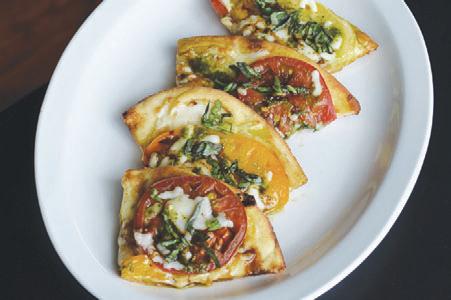

16 I SAUCE MAGAZINE I saucemagazine.com September 2014
Berries and cream Nitro Ice at Ices Plain & Fancy
Barrel-aged Manhattan and tomato flatbread at Rack House West Winery
iceS plain & Fancy
maryann’S Tea room
Unkle mUnkey’S Coin Club
rack hoUSe WeST Winery
WhiTeboX eaTery
P H otos by Mic HE ll E Volansky
Ices Plain & Fancy


saucemagazine.com I SAUCE MAGAZINE I 17 September 2014 P H otos by Mic HE ll E Volansky




18 I SAUCE MAGAZINE I saucemagazine.com September 2014 PH oto by J o H n l EE

that he will be a main attraction at this year’s taste of st. louis? in anticipation of seeing some heated action – along with his quirky grin – during Florence’s cooking demo on the amphitheater stage sept. 19, we caught up with the busy chef and father of three to ask him our most pressing food questions.
Things like fried chicken and barbecue are ones I grew up with and appreciate … It’s distinctive, heritage American cookery at its finest.
on ethnic cuisine: I really like Vietnamese food. It’s so dynamic, so delicious. I order pho a lot from the restaurant down the street from my house in California.
on the impact of social media on the culinary world: Social media has allowed everyone to take ideas and share them at a rapid pace. Chefs are getting really talented at a young age to decode plating styles, where before you had to go to the city and experience the restaurant to experience what that restaurant was all about. The downside about this: When young chefs get a chance to be exposed to visual stimulation, what they do miss sometimes is the terroir, the experience, the travel, the battle scars, the story, the emotional connection.
on strange occurrences while filming a tv program: On Food 911, we were up against the elements in a lot of ways. We threw a party at someone’s house every time. You never knew what was going to happen. We got kicked out of a couple of houses. We were in Cleveland shooting a pizza show with this lady. In the middle of shooting, this older lady storms into the house and (said), “What the hell is going on here? Who are you people?” It wasn’t this lady’s house. It was her boyfriend’s mother’s house. She kicked us out.
on being schooled by a chef: Victor Somoro: my culinary instructor at Johnson & Wales. 1989. Sauce and Skills. Knife-cutting skills. Victor picks up my knife, looks at the blade. He says to me, “Dull knife, dull chef.” And he walks away. My knives are always razor-blade (sharp).
Tyler’s Ultimate, The Great Food Truck Race, Food Court Wars, Food 911, How to Boil Water, Planet Food, All American Festivals and My Country, My Kitchen if you’ve tuned in to these shows on Food Network, you know a thing or two about tyler Florence, who has hosted them at one time or another for 18 years. But did you know that the celebrity chef has a kitchen retail shop in california? that he owns three restaurants? Has a line of baby food? is the author of 12 cookbooks, including Inside the Test Kitchen, slated for release this November?
on a recent st. louis dining experience: One place that was a pivotal experience for me as a chef was Adam’s (Smokehouse). I’m on a big barbecue kick … The St. Louis barbecue scene – I could never put my head around it until I went to Adam’s. When they started serving applesauce with barbecue, that’s distinctive. It feels distinctively German. Adam’s opened my eyes to that special, sub-genre barbecue in America.
on his favorite american regional cuisine: I’m from the South, so to me, the food from the American South defines what American is.
on the culinary lessons he’ll never forget: Simplicity and balance are two of the most important lessons I’ve learned. If you don’t have balance, your things are too salty and sweet or too spicy. Simplicity is a really, really powerful word that I’ve taken along with me forever. If you’re really picky about the ingredients, even if they are canned stuff, if you are choosy about what you’re serving … it shows a level of finesse when you can make three or four ingredients into the most special thing in the world.
on kitchen gadgetry: Having a super expensive knife that’s hard to sharpen is more frustrating than having a Victorinox. If you have a downand-dirty, cheap, good knife you can keep sharp, you’ll use that every night of the week. When I have a sharp knife, I mince an onion and I look down at those perfect squares. That makes me really happy … I grab those kinds of knives more than my $400 Japanese knives.
– Ligaya Figueras
The annual three-day food festival Taste of St. Louis returns this month, promising even more culinary delights. Grab a bite from one of more than 35 restaurants participating in Sauce Magazine’s Restaurant Row, watch area chefs compete in the Stella Artois Chef Battle Royale and take a stroll on the Art and Wine Walk. New this year are ticketed events featuring interactive cooking demonstrations by Food Network chefs Tyler Florence of Food Court Wars and The Great Food Truck Race and Duff Goldman of Ace of Cakes fame. Live music and fireworks are also in store.
Fri., Sept. 19 to Sun., Sept. 21, Chesterfield Amphitheater and Park, 631 Veterans Place Drive, Chesterfield, 314.534.2100, tastestl.com
saucemagazine.com I SAUCE MAGAZINE I 19 September 2014
oN BeiNg t yler FloreNce PH oto by J o H n l EE
TaSTe
oF ST. loUiS

20 I SAUCE MAGAZINE I saucemagazine.com September 2014

rev iews

Iwouldn’t blame you for comparing Brian Hale – the ponytailed darling of the St. Louis culinary scene of nearly a decade ago – to Carl Casper from this summer’s hit indie film, Chef. Both are tempestuous, talented and tattooed. Both feel the passion and pressure of the culinary life. Both find happiness by opening their own restaurants: Casper, a food truck in Los Angeles; Hale, Jax Café in Benton Park. Both make a mean Cuban sandwich.
saucemagazine.com I SAUCE MAGAZINE I 21 September 2014
new and notable Jax c afé
bY Mi C hael Renne R | Photos bY elizabeth Jo C hu M
new and notable jax ca F é p. 21 / power lunch que S azon p. 24 / nightlife the hive p. 27
All Sauce reviews are conducted anonymously.
Pan-seared sea bass at Jax Café

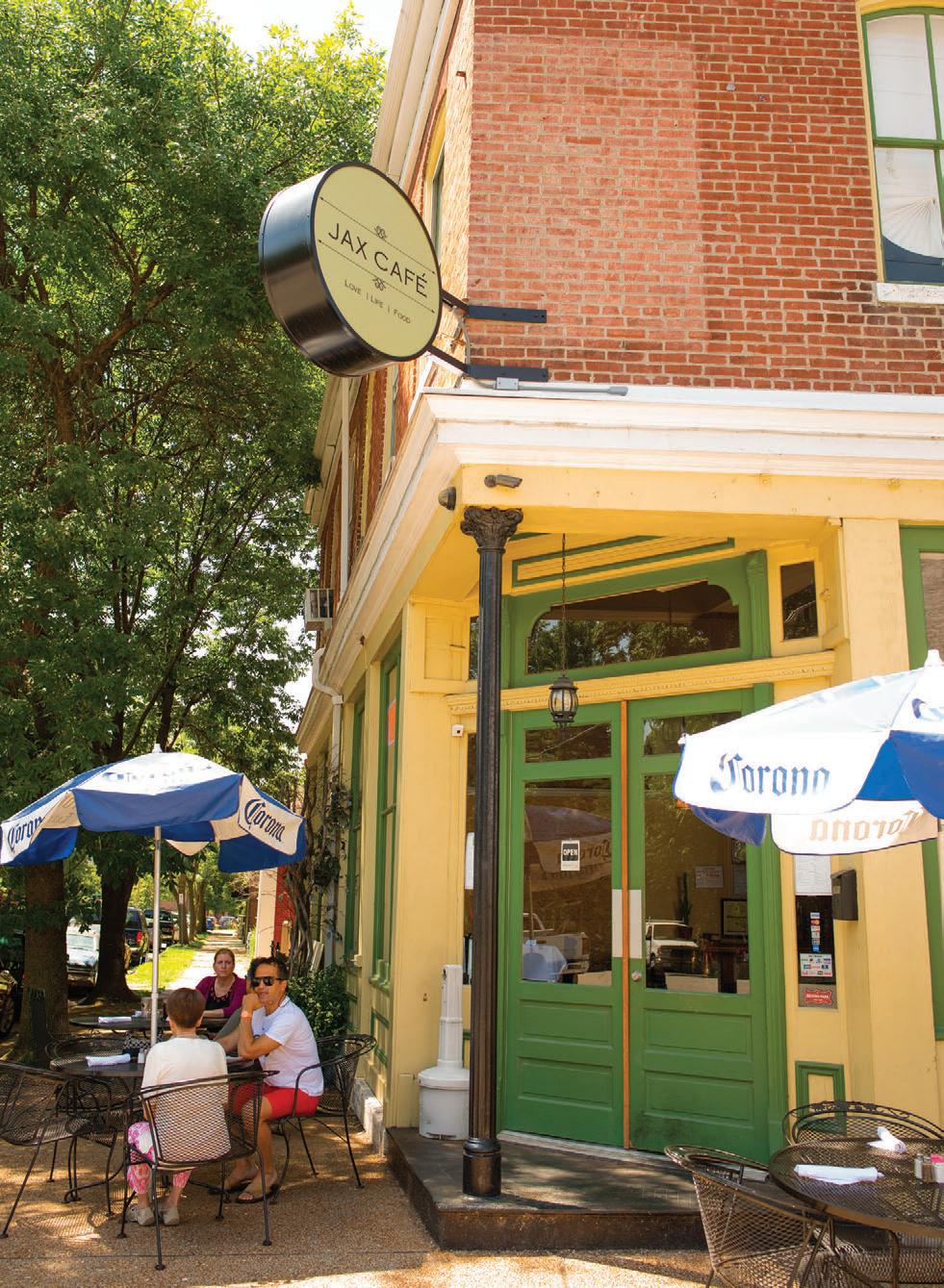
Who could blame you? The parallels are just too tempting – and not all that far apart. From the outside, it may look like a step down for a guy who once helmed the kitchens of St. Louis’ formerly top restaurants, notably SqWires and Monarch, not to mention all seven kitchens at The Chase Park Plaza. Ask, and Hale will readily talk about his rockstar career, how ego and burnout led to his voluntary sabbatical and how his 14-month-old Jax Café, in partnership
with Gina and David Seltzer, is exactly what he wanted.
Hale took over the former Pointer’s Market building, tucked away on a leafy, quiet side street, and for the first eight months offered only breakfast, lunch and weekend brunch, a sure sign that he was taking a slower, simpler route. But by March, weekday breakfast was so slow that Hale dropped it in favor of dinner service, which is what he loves best. (Lunch and weekend brunch are still offered.)
Straightforward a merican fare infused with a sian and e uropean influences is the hallmark of h ale’s approach. Case in point: tuna nachos. Five triangles of fried wonton dough played the role of “tortilla chips,” each topped with a slice of sesame seedstudded, seared yellowfin tuna, mangopepper relish and creamy wasabi aioli. As you take a bite, noticing how the horseradish-y wasabi cuts through the sweetness of the mango, look around: the charm of the mismatched flatware, the unadorned interior, Hale’s dizzying collection of Pez dispensers. Watch him bring out plates of hot food. Listen as he tells a diner that the Swiss chard delivered earlier that day didn’t look good, hence the green beans on his plate.
I’ve enjoyed several brunches at Jax well before this assignment (I recall some remarkably fluffy hazelnut pancakes and really good dark roast coffee), but dinner is where Hale belongs. The evening menu features a quartet of appetizers (counting those tuna nachos), three salads, a nightly soup (like a flavorful shiitake hot-andsour, as deeply concentrated as a good French onion soup) and a handful of entrees varied enough for most diners, including vegetarians (who will enjoy the noodle-less eggplant cannelloni).
The website states Jax specializes in “gourmet eclectic comfort food” and “recognizable food with a twist.” A juicy slab of rib-eye, seasoned with salt and pepper and seared, was certainly comforting, especially with a side of dirty mashed potatoes. Delicious roasted Brussels sprouts, chopped and laced with lardons, accompanied the dish. The slight twist came from the blueberry steak sauce, its subtle sweetness carrying a touch of heat.
More comfort was served up with Shiitake Chicken, a juicy, boneless breast propped up with grilled asparagus and light, fluffy mashed potatoes. But it was the rich, creamy sauce, chunky with mushrooms and caramelized onion,
that elevated this otherwise common dish. Pan-seared sea bass, moist and flaky, looked particularly dramatic when presented on a long, thin slab of slate. The fish, striped zebra-like with a balsamic reduction and saffron-infused beurre monté (a luscious emulsified butter sauce), sat atop a risotto cake made with savory wild mushrooms. To the side were beets soaked and cooked in port wine and cayenne pepper, a nice twist that imparted delicate sweetness and pleasantly sneaky heat to the earthy root.
Then there was the duck confit, the dish that more than any other exemplified h ale’s style and whimsy. A savory chipotle-cherry pancake is topped with arugula, creamed corn and a confit of duck leg, followed by a dollop of apricot marmalade and stripes of balsamic reduction for acidity. If you’re thinking that’s a lot of competition for a limited number of taste buds, try describing it. I gave up on wordsmithing by the third bite and just concentrated on the surprisingly complementary flavors.
There’s a small but thoughtful list of wines with reasonable prices and healthy pours by the glass. Local beers are well represented. Cocktails, like the Elderflower Fizz and the Bourbon and Peach, are fun but too big. The large servings dilute not only the alcohol but the whole purpose of a pre-meal cocktail. It’s hard to have a glass of wine with dinner while still working on a nightclub-sized drink.
Jax is exactly the kind of restaurant you want in your neighborhood: great food prepared with panache (“We don’t even have a microwave,” a server proudly stated), casual and comfortable surroundings and attention to detail from a chef who’s doing what he loves. It’s exactly the kind of restaurant you want to succeed. Like Chef Casper, it seems Chef Hale has found redemption and serenity in his new life and restaurant, which of course makes us happy diners. (Cue swelling music and roll credits.)
22 I SAUCE MAGAZINE I saucemagazine.com September 2014
Don’t Miss Dishes Yellowfin tuna nachos, sea bass, duck confit, rib-eye AT A GLANCE Jax Café new and notable p. 2 of 2 reviews When Wed. to Fri. – 11 a.m. to 10 p.m., Sat. – 9 a.m. to 10 p.m., Sun. – 9 a.m. to 2 p.m. Vibe Simply decorated, casual neighborhood setting that belies the high caliber of the cuisine. Entree Prices $15 to $19 Where 2901 Salena St., St. Louis. 314.449.1995, jax-cafe.com





saucemagazine.com I SAUCE MAGAZINE I 23 September 2014

The heart of the menu at Que Sazon is the arepa, a flat, thick cornmeal cake cradling various meats and toppings. The arepa has been likened to the taco, yet the corn cake is split lengthwise, not folded into a shell like a taco. This means you’ll want to eat it with a knife and fork – if you pick it up, “The center cannot hold,” as the saying goes.
The corn cake, which has a texture similar to polenta, holds fillings such as the Pollo & Mango [1]. Generous portions of pulled chicken, avocado and diced mango mingle with Que Sazon’s creamy, all-purpose chimichurri mayo sauce. It’s a summertime winner, but pales next to the Pabellon [2], which might fairly be called the “man’s arepa.” Shredded beef and starchy fried strips of plantain – not to mention the addition of crumbled Mexican cotija cheese – conspire to form a meat-and-potatoes-like texture. The Chimichurri & Gorgonzola arepa features boulders of Gorgonzola cheese melting onto the chimichurrimarinated beef, with sliced grape tomatoes and a tangy balsamic-cilantro dressing. It’s well suited to American palates trying an arepa for the first time. The De Pernil pork shoulder arepa, however, suffers from a spicy mango barbecue sauce with muted heat and a workaday sweetness that cancel each other out, making for an unremarkable experience.
Que Sazon occasionally offers a spicy chicken empanada (among others), though due to some trouble obtaining the ingredients, it hasn’t made it lately.
power lunch QUe Sazon
by byron k erman | photo S by e lizabeth m ax S on
St. Louis is so glutted with food trucks that it seems that each month there are several new ones to try. Among such trucks, Que Sazon (Spanish for “What a flavor!”) offers cuisine you’d be hard-pressed to find anywhere else: South American street food.



few minutes after it’s ordered to thronging lunch crowds. They’re also happy to explain dishes to a St. Louis public that’s largely unfamiliar with South American cuisine [4]
Sazon 314.775.7714, quesazontruck.com, twitter: @quesazontruck
Daily communication through social media is how we track food trucks. Yet Que Sazon’s social media skills are less than stellar. Its tweets are sporadic: some days I wasn’t sure they were even open. And in recent weeks, the truck has failed to show up at one tweeted destination with no notice or explanation.
Nubs of fried yucca are the Latin American answer to tater tots. With the consistency of parsnips, the crispy exterior yields a chewy inside. They’re excellent as served, doused in chimichurri. Another side dish, black beans, is stewed with diced veggies and topped with more of those fried plantains and crumbled cotija. It’s a hearty dish that, with the addition of rice, could easily become a filling entree.
The array of beverages for sale included Latin American favorites like bottled Jarritos soda, Peru’s Inca Kola (more of a cream soda than a cola) and Guarana, a brand of soda imported from Brazil. The latter has that subdued sweetness familiar to those who enjoy energy drinks.
Que Sazon, with its filling arepas, fried yucca and other treats, is a welcome and estimable addition to the Gateway City’s food truck scene. The occasional menu and logistical hiccups so far have prevented it from truly setting the world en fuego, but the truck still offers the hungry crowds that line up there a tasty education.

24 I SAUCE MAGAZINE I saucemagazine.com September 2014
power lunch reviews
Que
¿Qué es una arepa?
sides
aside [4]
[1]
service with a smile
[3]
tiny bubbles
The gang [3] aboard Que Sazon is working hard, and that means serving food just a
[2]
the takeaway




saucemagazine.com I SAUCE MAGAZINE I 25 September 2014




26 I SAUCE MAGAZINE I saucemagazine.com September 2014
nightlife the hive
by

It’s happy hour at The Hive, and I’m lounging on a sun-soaked patio with friends, halfway through an iceddown bucket of lagers. A $5 basket of toasted ravioli is on the way. Laughter and cold beer are in abundance on the deck. This is a typical scene for the no-frills, ramshackle dive bar in Creve Coeur.
The place: a quirky, two-story hole-inthe-wall. The Hive may well have been zoned as commercial property, but it could just as easily have been a singlefamily home abandoned in the 1970s and left to the beer-swilling hordes who took up residence. Buried out in West County – land of office parks, strip malls, and cul-de-sacs – The Hive isn’t so much a local institution as it is a guilty pleasure
for people seeking cheap beer and raucous company. The main floor is a frat housebasement of a room crammed with dart boards, flat screens, sports memorabilia, neon beer signs and traces of cigarette smoke, presumably trapped inside from whenever the Gin Blossoms last had a hit radio single. Outside, there’s a cheerful collection of a dozen or so umbrellatopped tables and plastic chairs, part of a makeshift Biergarten overlooking the adjacent parking lot.
The crowd: It’s hardly the Ritz, but good luck scoring a seat at the bar at 6 p.m. on a weeknight. During my visits, the convivial downstairs room at The Hive was abuzz with a diverse clientele: thirsty undergrads on summer break, middle-aged suburban men
with their ties loosened and a smattering of blue-collar guys in paint-splashed jeans. Dolled-up waitresses dart around the tables, upstairs and down, stopping maybe to fuss over their hair in the mirror behind the bar before eventually making their way to the next table with a smile and a notepad. The older crowd swells early on weekend nights, with singles and couples alike stopping in to relax over a pitcher of beer. But as the night stumbles on, the BMW- and Brooks Brothers-crowd is steadily outnumbered by the younger demographic, wearing T-shirts and driving open-top Jeep Wranglers.
The booze: is plentiful and inexpensive. While there is a nominal list of well-meaning signature cocktails – Bee Tang, The Hive Lemonade, XXX Berry Martini – none is very strong, and during one of my visits, the martinis were oddly served up in oversized plastic cups that were likely intended as water glasses. Things got better with the regular mixed drinks and classic cocktails, including a whiskey sour I’d be glad to sip on for the rest of my days. Don’t expect too much variety in terms of beer choices (Guinness and Stella Artois are about as international as the place gets), but $3 cocktails and bottles of domestic beer make for a fine happy hour from 4 to 7 p.m. every weekday. Food-wise, the thin, crispy $9 pizzas are stellar, as are those piping-hot and savory toasted raviolis. On Tuesdays, $1 tacos are served all day.
The bottom line: If today’s bar scene is all about up-charging for meticulously prepared drinks with properly sourced ingredients, it’s good to know there’s still an absolute antithesis out there. Typical neighborhood bars can easily devolve into forgettable, half-assed puzzles with several pieces missing. This isn’t so at The Hive. There’s a grin-inducing, at-home feel about the place, which is no small feat for a random suburban saloon. So either pull up a chair or push back the table and scamper off in distaste. If it’s the latter, it’ll only mean more beer for the rest of us. The Hive is happy to see you buzz off.

toasted ravioli: The kitchen isn’t playing around with its surefire take on the St. Louis staple.
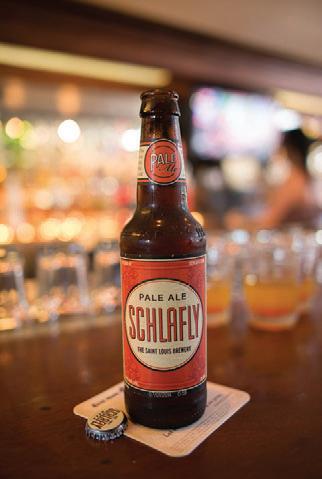
Around 20 varieties of bottled beer are served. Even ice-filled buckets of six domestics are comfortably priced at $16.
saucemagazine.com I SAUCE MAGAZINE I 27 September 2014
m att berkley | p hoto S by elizabeth jochum
The Hive 609 N. New Ballas road, creve coeur, 314.569.1769, Facebook: the Hive
order iT:
The Hive
reviews
nightlife



28 I SAUCE MAGAZINE I saucemagazine.com September 2014 illustrations by V i DH ya na G ara J an
by
dine & drink

Check out
for
A SEAT AT THE BAr
Four experts tell us what to sip, stir and shake

glenn bardgeTT
Member of the Missouri Wine and Grape Board and wine director at Annie Gunn’s
Bonny doon vineyard le cigare volant was created in 1984 by the winery’s founder, Randall Grahm. He was one of the earliest California winemakers to embrace the wines of France’s southern Rhone region. His Le Cigare Volant (The Flying Cigar) is a blend of syrah, grenache, cinsault, mourvèdre and carignane. Apropos of his renegade style, Grahm named the wine after an absurd 1954 decree by the village of Chateauneuf du Pape forbidding flying saucers – cigares volants – to land there. The village has remained free of UFOs, Grahm is still “The Rhone Ranger,” and a $36 bottle of the 2010 vintage is delicious.

Ted and jaMie kilgore
USBG, B.A.R. Ready, BarSmart and co-owners/bartenders at Planter’s House
The Pisco s our was created around 1920 as an American expat’s local take on a whiskey sour. It may appear plain, but once you experience the aromatic fruitiness and soft floral notes of Peruvian pisco – brandy made from grapes – coupled with a frothy egg white, tangy citrus and sweet simple syrup, you’ll see why the Pisco Sour has become the national drink of Peru. To make your own: Mix 2 ounces pisco (BarSol or Portón are great options.), 3 ∕4 ounce fresh lemon juice, 3 4 ounce simple syrup and 1 egg white in a shaker. Add ice and shake vigorously until your hands freeze. Strain into a cocktail glass and top with 3 dashes of Angostura bitters.

cory king
Certified Cicerone, head brewer at Perennial Artisan
Ales and founder of Side Project Brewing
A Pilsner is a very blond, effervescent, assertively hopped lager that originated in the Czech Republic city of Pilsen. Traditionally, a Pilsner is classified as either Czech or German in style. The former, sometimes known as a Bohemian Pilsner, promises a soft, round crispness, whereas the latter exemplifies a drier body. In conjunction with its harder water, this accentuates a higher bitterness due to the use of German hops. My pick for a Czech-style Pils is Pilsner Urquell . If it’s German you’re after, reach for a radeberger or go local with Urban chestnut Brewing co.’s stammtisch
saucemagazine.com I SAUCE MAGAZINE I 29 September 2014
illustrations
V i DH ya na G ara J an
Cory King's picks
Pilsners

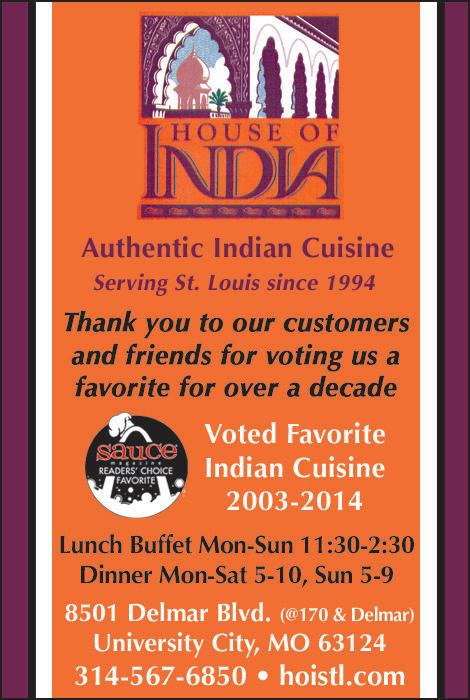


30 I SAUCE MAGAZINE I saucemagazine.com September 2014 P H oto by G r EG rann E lls
b est of barrel-aging
by matt obermark


As the American craft distilling movement comes of age, different types of used, or “spent,” barrels have landed in the hands of area chefs, bartenders, brewers and artisan food purveyors who use them to age their own liquid goods. We’ve seen these creative pros lay down everything from cocktails to hot sauce to milk to bitters on wood in a quest to impart the flavor of the barrel and its former contents into their wares. Whiskey barrels, wine barrels, sherry casks – there’s a palpable hysteria over using any and all variety of spent wood. Whether you’ve been hooked on the trend since you first tasted a barrel-aged Negroni or the barrel-aging craze is brand-new to you, here are some of the best projects around town right now.
Woodside UrBaN WHisKey Barrel-aged HoNey
After impressive results barrel-aging their Sweet Sophie maple syrup, the folks at The Wine & Cheese Place tapped local Renaissance man Greg Rannells, producer of Woodside Urban Honey in Maplewood, to age some of his delicious honey. Rested for six months in a 5-gallon oak barrel that once held Palm Ridge Reserve whiskey, the honey took on a deep amber color from the char of the oak, while notes of toasted orange, vanilla and baking spice impart a unique flavor with a long finish. Use it as a glaze for fish, as a sweetener for tea or in a Bee’s Knees cocktail. The applications are limitless. $8. The Wine & Cheese Place, multiple locations, wineandcheeseplace.com
MississiPPi MUd Barrel-aged sUMatra coFFee BeaNs
To confer unique barrel notes to
once finished, the barrel was passed along to local distillery Still 630 for aging its rye whiskey.

roasted coffee, Mississippi Mud owner-roaster Chris Ruess aged green Sumatra beans for four to six weeks in a French oak barrel from Chandler Hill Vineyards that had previously held its estate norton. The result is a richly fruit-forward, low-acid coffee that is fantastic as a cold brew or pour-over, though a cup of drip coffee is tasty, too.
Mississippi Mud also offers a blend of its aged and standard roast Sumatra beans, which retains the jam and spicy red fruit notes but results in a lighter cup. $12. Mississippi Mud Coffee, 1233 Pine St., 314.369.0432, mississippimudcoffee.com
cielo cocKtail crUsH
Lots of local bars and restaurants have offered barrel-aged cocktails over the last few years, but Cielo’s current offerings rank among the most extensive – and entertaining. The bar team, led by restaurant and bar manager Cory Cuff and assistant bar manager Gorie Taylor, has designed a menu option it tonguein-cheek refers to as Cocktail Crush, which lands somewhere between playing Power Hour in college and a choose-your-own-adventure menu. Cocktail Crush features five barrelaged cocktails – Negroni, Manhattan, vieux carre, vesper and empire – plus house barrel-aged vodka, gin, tequila, cachaça, grappa and amaro. Guests enjoy a 30-minute session tasting the current lineup of aged cocktails. Alternatively, imbibers can pay by the drink to build their own, classic or otherwise, using the house barrelaged spirits. Tasting session: $35; build-your-own cocktail: $12. Cielo, 999 N. Second St., St. Louis, 314.881.5800, cielostlouis.com
After the RallyPoint Maple Sunset whiskey was dumped from the barrel, the wood landed in the hands of Side Project ownerbrewer Cory King, who’s still deciding which beer to fill it with. Long live the barrel!
saucemagazine.com I SAUCE MAGAZINE I 31 September 2014
P H oto by G r EG rann E lls
elixir
The Wine & Cheese Place used a spent Knob Creek 9-year bourbon barrel to age Sweet Sophie maple syrup.
THE ULTIMATE IN BARREL REPURPoSING
Saag paneer

Iam more likely to be struck by lightning than to bring my grocery list into the store. Usually I leave the list on the kitchen counter, although every now and then the sheet of paper makes it to the car, where it hides in the canvas bags that I also forget to carry in. My tendency to shop from memory is the reason why my pantry is stocked with spaghetti sauce, but is bare of noodles. It’s also why I recently had a refrigerator overflowing with six bags of leafy greens, but no plan for using them.
Kale and spinach are chock-full of vitamins A, C and K, and also contain a good amount of calcium and even some protein. Yet greens aren’t as easy to snack on as, say, Cheetos No one in my house was going to eat raw greens by the handful; I had to actually cook them or else they’d wilt and I’d forget to throw them away.
32 I SAUCE MAGAZINE I saucemagazine.com September 2014
vegetize
it
by kellie hyne S
p ho T o S by carmen T roe SS er
My solution was saag paneer, a flavorful Indian dish of cooked saag (leafy greens) and paneer, a cheese with a feta-like texture that’s made from water buffalo’s milk. You may have heard of saag’s cousin, palak paneer, which pairs paneer with spinach. Technically, all palak paneer dishes can be called saag paneer, but not all saag paneer can be called palak paneer. (Which, by the way, is a great sentence to throw out there if you want to prematurely end a party conversation and poke around the dessert table by yourself.) I wanted to use up as much kale and spinach as possible, but saag paneer works with any leafy vegetable you’ve overbought, including collard or mustard greens.
I crave cheese constantly, so I got really excited about DIY vegan paneer, which, it turns out, is crazy-easy to cook up since it’s an unaged cheese made by curdling heated milk with an acid. I boiled soy milk, added white vinegar, and in a stroke of pure cooking magic, the “curds” instantly separated from the “whey.” I say magic because the curds
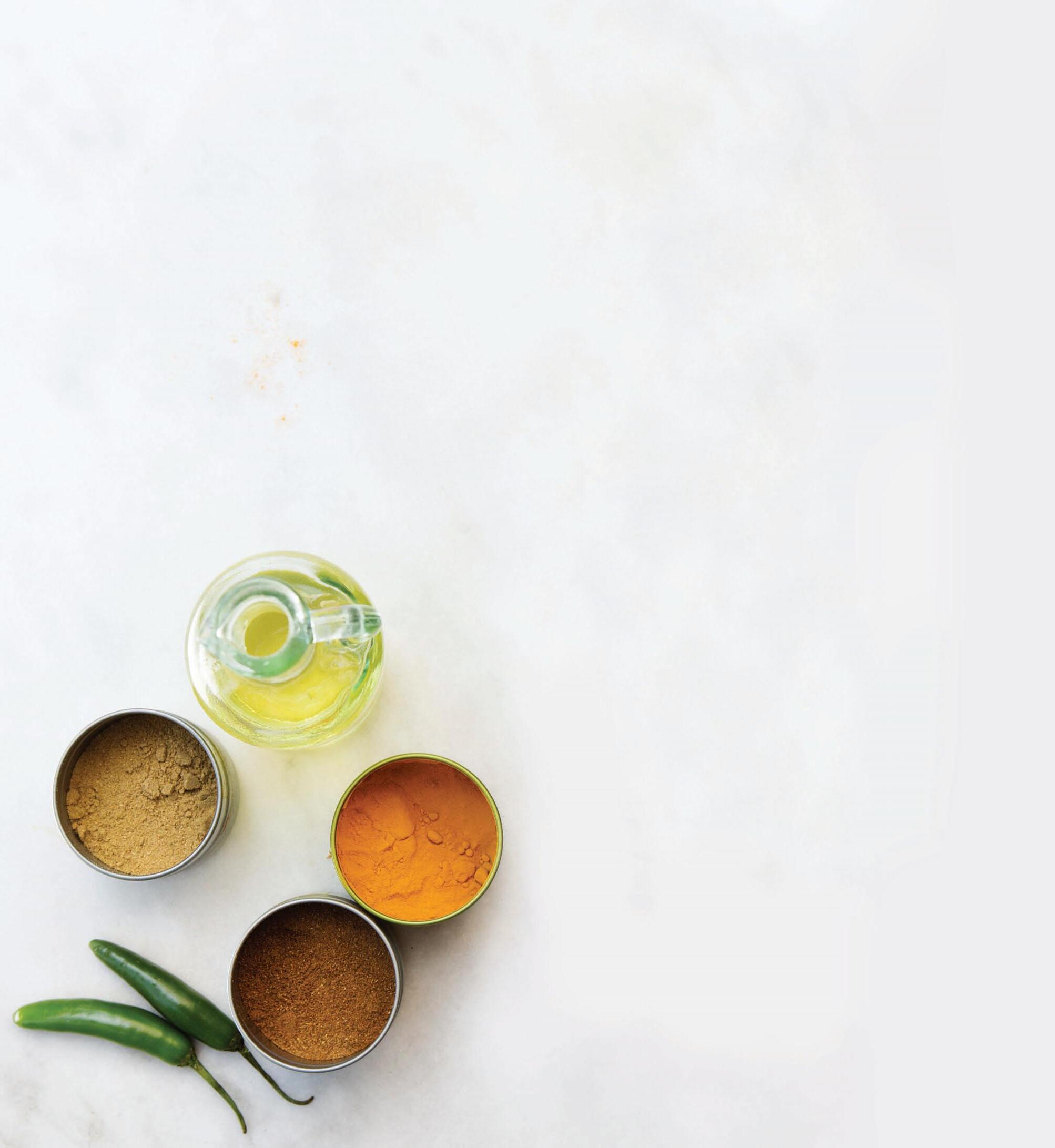
appeared even though there wasn’t a drop of dairy to be found. There was also a puff of smoke, but that may have been a curd that accidentally dropped and ignited on the burner.
I drained the curds and bundled them tightly in a cheesecloth, then refrigerated the whole thing overnight to make the curds stick together. It’s true that overnight refrigeration adds exponentially more prep time, but since paneer doesn’t use rennet as the coagulation agent, patience is essential.
If you need to whip up a quick dinner, you can use pressed firm tofu instead of paneer. The tofu will taste a bit blander than the paneer, even if you fry it. And, of course, you won’t experience the immeasurable satisfaction of handcrafting your own vegan cheese.
Saag paneer looks a lot like creamed spinach with little floating croutons, which is why my husband, Carnivore Bob, was confused by the intense flavors of the Indian spices I forgot to tell him
about. Coriander, turmeric and garam masala are a lively trio that adds warm, sweet peppery notes, transforming the dish from basic greens to complextasting cuisine. Each bite is so interesting that saag paneer can easily serve as an entree for vegans and omnivores alike, all of whom will be impressed by the whopping 24 ounces of leafy greens you managed to use up.
Vegan Saag paneer
2 TO 4 SERVINGS
1½ lbs. leafy greens, thick stems removed
1 Tbsp. plus ¼ tsp. salt, divided
12 oz. vegan paneer (recipe follows) or firm, pressed tofu
4 Tbsp. canola oil
1 tsp. cumin seeds
1 medium onion, diced
1 green serrano pepper, deseeded and finely chopped
1 Tbsp. minced garlic
1 Tbsp. ginger paste or 1-inch fresh ginger, peeled and minced
1 tsp. ground coriander
½ tsp. turmeric
1 cup full-fat coconut milk
½ tsp. garam masala
• Blanch the greens: Start by filling a large bowl with ice water. Next, pour 4 quarts of water into a large pot and bring it to a rolling boil over high heat. Add 1 tablespoon salt. Using tongs, place the greens into the salted water and return the water to a boil. Cook the greens 1 to 2 minutes, until they are bright green and tender to the bite. Drain the greens in a colander, then use kitchen tongs to plunge the greens into the ice water to stop the cooking. When the greens are chilled, drain them in the colander again, squeezing out as much water as possible. Purée the greens using a food processor or an immersion blender. Set aside.
• Unwrap the vegan paneer and sprinkle ¼ teaspoon salt over it. Cut the paneer into bite-size cubes.
• Heat the canola oil in a medium heavy-bottom skillet over mediumhigh heat. Working in batches if necessary, carefully lower the paneer pieces into the oil and fry 5 minutes, turning the pieces until all
sides are golden brown. Remove the paneer pieces and blot dry with a paper towel. Set aside.
• Pour off all but 2 tablespoons of the oil in the pan. Heat the oil over medium-high heat. Add the cumin seeds and brown until they are fragrant, about 1 minute.
• Add the onion and pepper, sauteing until soft and lightly browned, about 5 minutes. Add the garlic, ginger, coriander and turmeric. Stir until fragrant, about 30 seconds. Reduce heat to simmer. Add the puréed greens, coconut milk and fried paneer pieces, cooking until heated through. (If it becomes too dry, add a splash of water.) Stir in the garam masala. Taste and adjust seasonings. Serve hot with naan or rice.
Vegan paneer
12 OUNCES
½ gallon full-fat soy milk ¼ cup distilled white vinegar
• Cut a piece of cheesecloth into an 18-by-36-inch rectangle. Fold it in half to make an 18-inch square, double layer of cloth, and line a colander with it. Place the colander in the sink.
• Bring the soy milk to a boil in a heavybottomed stockpot over medium-high heat, stirring frequently to prevent scorching. As soon as the soy milk boils, quickly stir in the vinegar and remove the pot from the heat. The milk will separate into “curds,” which initially look like foam, and “whey.” Coax the curds together by stirring the milk with a wooden spoon gently for about 1 minute.
• Carefully pour the hot soy milk into the lined colander, which will reserve the curds and drain the whey. When the curds are cool enough to touch, wrap the cheesecloth tightly around them and squeeze to remove as much liquid as possible. Place the wrapped curds back in the colander. Set a weight, such as a pot filled with canned goods, on top of the wrapped curds. Allow the wrapped curds to continue draining for 1 hour, then refrigerate the cheese overnight in the colander, setting a plate underneath to collect any remaining moisture.
saucemagazine.com I SAUCE MAGAZINE I 33 September 2014

34 I SAUCE MAGAZINE I saucemagazine.com September 2014 PH oto by G r EG rann E lls
MAKE THIS

Find fresh, high-quality fish at Bob’s Seafood, 8660 Olive Blvd., University City, 314.993.4844, bobsseafoodstl.com.
How can you up your pasta game? Give it a Japanese twist. In her cookbook Pasta Modern, Italian food authority Francine Segan substitutes pasta shells for rice to make Pasta sushi. Here’s our rendition of this easy appetizer: Cook 12 to 15 jumbo-sized pasta shells in a pot of unsalted boiling water for 14 minutes, drain, then place in ice water to stop the cooking. Drain and transfer the shells to paper towels to dry. Drizzle a touch of balsamic vinegar inside each shell. Next, lay a basil leaf in each, followed by a ¾-inch strip of ¼-inch-thick sashimi-grade salmon. Garnish with chopped mint and toasted sesame seeds. Chill or serve immediately. Mangia! Or should we say itadakimasu? — Dee Ryan
make this
Have fun designing your pasta sushi. Microgreens, radish sprouts, baby cilantro, shredded carrots and roasted red peppers all make colorful, flavorful garnishes.
If you enjoy Dee Ryan’s quick and easy recipes in Make This, don’t miss her online column, Just Five. Go to samg.bz/saucejust5 to find recipes you can whip up in a jiffy and that require just five key ingredients.
saucemagazine.com I SAUCE MAGAZINE I 35 September 2014 PH oto by G r EG rann E lls
active time: 10 minutes
PAstA susHi



36 I SAUCE MAGAZINE I saucemagazine.com September 2014

saucemagazine.com I SAUCE MAGAZINE I 37 September 2014
A-camping we will go
5 easy recipes to make in the great outdoors
By Anne Marie and Dan Lodholz |
During our first year as a couple, Dan and I celebrated my birthday with a camping trip. He bought me a Coleman stove. We borrowed a friend’s tent. We took our French press for coffee, packed some eggs, bacon, bread, beef stew and pickleloaf. With the sunlight streaming through the dappled leaves and crisp fall air, we took comfort in the familiar, wrapped up in the adventure of the outdoors and our new life together, sipping on mugs by the morning fire.
It’s never about the distance traveled or the heights climbed. We’ve camped in places as exotic as Big Bend National Park in Texas and Great Sand Dunes National Park and Preserve in Colorado, but our excursions in the great outdoors have always centered around spending time with each other and unwinding. In fact, many of our favorite places to stay have been beautiful Missouri state parks within a couple hours’ drive of St. Louis.

When camping, time seems to simply slow down; everything tastes better outside and smells cleaner and more intense. Even routine camp chores seem an adventure in the company of buttercups, great purple swallowtails and lightning bugs.
For people who don’t get to cook as much as they would like, vacation, and camping in particular, can be a time to escape and enjoy making simple meals from scratch with family and friends. We developed these recipes as templates to showcase your own favorite seasonal ingredients, prepped at home and cooked over a campfire or nestled in the hot coals. For simplicity’s sake, the recipes call for just a cast-iron skillet and a Dutch oven. Flexibility is the key to cooking outside, and scarcity is the mother of creativity –hopefully with a cold beverage in hand while working under the shade of your favorite oak forest.
photos by carmen troesser
38

Sausage and v egetables with quinoa recipe on p. 40
baRlEy poRRidgE
4 SERVINGS
1 cup rolled barley
2 cups water
¼ cup date pieces with oat flour*
¼ cup raisins
½ tsp. cinnamon
¼ tsp. kosher salt
brown sugar, butter or peanut butter to taste, for topping
• In a watertight container with a lid, soak the barley in the water overnight.
• In a cast-iron skillet, combine the soaked barley, dates, raisins, cinnamon and salt, and cook over the coals of a campfire, stirring occasionally for 5 to 10 minutes, until the barley and fruit achieve the desired thickness.
• Divide evenly between four bowls and top with brown sugar, butter or peanut butter as desired.
*Available in the bulk section at specialty markets, such as Whole Foods
biScuitS and gRavy
4 SERVINGS
Prepare the biscuits ahead of time by cutting out the biscuits and freezing them on a cookie sheet. Keep the uncooked biscuits in a freezer bag until ready to cook. Cooking from frozen creates a flakier biscuit.
For the biscuits:
4 cups all-purpose flour
¼ cup sugar
6 tsp. baking powder
1½ tsp. kosher salt
½ tsp. baking soda
¾ cup cold butter, cut into in small cubes
2 cups buttermilk canola oil, for greasing
• In the bowl of a food processor or a large mixing bowl, combine the flour, sugar, baking powder, salt and baking soda. Add the butter and pulse
or cut in with a pastry cutter until the butter is pea-sized.
• Add the cold buttermilk to the dough, pulsing or mixing until it just comes together and can be rolled out.
• On a floured cutting board, roll the dough to ¾-inch thickness. Using a ring mold or a cup, cut out the biscuits and place them on a baking sheet lined with parchment or wax paper. Roll out the scrap dough and continue to cut biscuits. If possible, do not roll out the dough more than twice.
• Freeze the biscuits in zip-top bags overnight. They will keep for several months.
• To bake, the campfire coals should be between 300 to 400 degrees. Grease a Dutch oven with the oil. Add a single layer of biscuits and cover. Nestle the oven in the coals. Bake 10 to 12 minutes, until the biscuits are golden brown on top and pull apart easily. Use a spoon to remove biscuits from the oven.
For the sausage gravy:
½ lb. sausage
1 Tbsp. all-purpose flour
1 cup milk
kosher salt and freshly ground black pepper to taste
• In a cast-iron skillet, brown the sausage over hot coals. Sprinkle the flour over the browned sausage, stirring to create a roux. Add the milk and stir, letting the sauce thicken for 5 minutes until it reaches the desired consistency. Season with salt and pepper. Remove from heat. Serve over hot split biscuits.
1 red bell pepper, chopped 2 cups washed, chopped greens (such as Swiss chard, kale or mustard greens)
• Bring the chicken stock to a boil in a Dutch oven. Add the quinoa. Cook 5 to 10 minutes, stirring periodically, until most of the liquid has been absorbed. Remove from heat. Let sit, covered, 10 to 15 minutes. Add the cheese and season to taste with salt and pepper.
• Meanwhile, in a cast-iron skillet, brown the sausage over hot coals. Remove the browned meat from the skillet and set aside.
• In the remaining sausage fat, saute the onion until translucent. Add the red pepper and salt to taste. Cook 5 minutes, until the vegetables begin to soften. Add the greens. Season with salt and pepper, stirring to wilt the greens.
• When the vegetables are tender, return the sausage to the pan and season to taste. Remove from heat.
• To serve, divide the quinoa evenly among four bowls. Top each with the sausage and vegetables.
Sloppy JoES
4 SERVINGS
Make the sauce ahead of time and freeze in a zip-top bag. The frozen sauce doubles as an ice pack for the cooler. Thaw before cooking.
2 cloves garlic, crushed ¼ red bell pepper, chopped
½ serrano pepper, seeded
1 medium onion, chopped, divided 1½ Tbsp. Worcestershire sauce
3 oz. tomato paste
1∕8 tsp. cumin
½ tsp. chili powder
1∕8 tsp. cayenne
1 tsp. kosher salt
½ tsp. sugar
½ tsp. Sriracha
½ lb. ground beef
4
4 cups chicken stock
2 cups quinoa
¼ cup grated pecorino or parmesan cheese
kosher salt and freshly ground black pepper
½ lb. sausage
1 medium onion, chopped
4 hamburger buns
• In the bowl of a food processor, pulse the garlic, red bell pepper, serrano pepper, half of the chopped onion, Worcestershire sauce, tomato paste, cumin, chili powder, cayenne, salt, sugar and Sriracha, scraping the sides occasionally, until the mixture is very fine.
• Transfer sauce to a zip-top freezer bag and freeze.
• To make the sandwiches, heat a castiron skillet over hot coals. Brown the beef until cooked through, about 5 minutes. Drain the excess fat.
• Add the remaining chopped onion and saute until translucent, about 3 to 5 minutes.
• Add the sauce and cook 5 minutes, until the mixture is hot and well incorporated.
• Serve on hamburger buns.
Dessert
caRamEl applE RightSidE-up cakE
4 TO 6 SERVINGS
Like a box cake mix, this recipe is much easier if you mix the dry ingredients together at home and bring them with you in a zip-top bag.
2 cups all-purpose flour
¾ cup sugar
¾ tsp. kosher salt
2 tsp. baking powder
1 tsp. baking soda
1 tsp. cinnamon
½ tsp. nutmeg
1 cup milk
¼ cup canola oil
2 eggs
½ cup (1 stick) butter
1 cup brown sugar
3 apples (such as Macintosh, jonathan or cripps pink), quartered, cored and sliced
• In a large bowl, whisk together the flour, sugar, salt, baking powder, baking soda, cinnamon and nutmeg.
• Add the milk, oil and eggs to the dry ingredients and mix well.
• In a Dutch oven heated over a layer of coals, melt the butter and the brown sugar to create a caramel sauce. Spread the apples evenly across the bottom of the oven. Pour in the cake batter, cover and use tongs to cover the lid with coals. Bake 15 to 18 minutes, until a knife inserted into the center comes out clean. Remove from the Dutch oven with a large spoon and serve.
40 I SAUCE MAGAZINE I saucemagazine.com September 2014
SauSagE and vEgEtablES with Quinoa
SERVINGS
Dinner
apple rightside-up cake recipe on p. 40
It’s best to cook directly over coals, not flames! Coals are ready when they have ash around the outside and are glowing slightly. If you can hold your hand over the coals without pulling away for 3 full seconds, then you have reached an ideal cooking temperature.

Sauce contributors Anne Marie and Dan Lodholz share plenty more than campout cooking ideas on their monthly online column, the Weekend Project. Go to samg.bz/sauceweekendproject this month for a lesson on making authentic Chinese bao.
saucemagazine.com I SAUCE MAGAZINE I 41 September 2014
Caramel





September 2014 42 I SAUCE MAGAZINE I saucemagazine.com
t he s ecret f ig s ociety
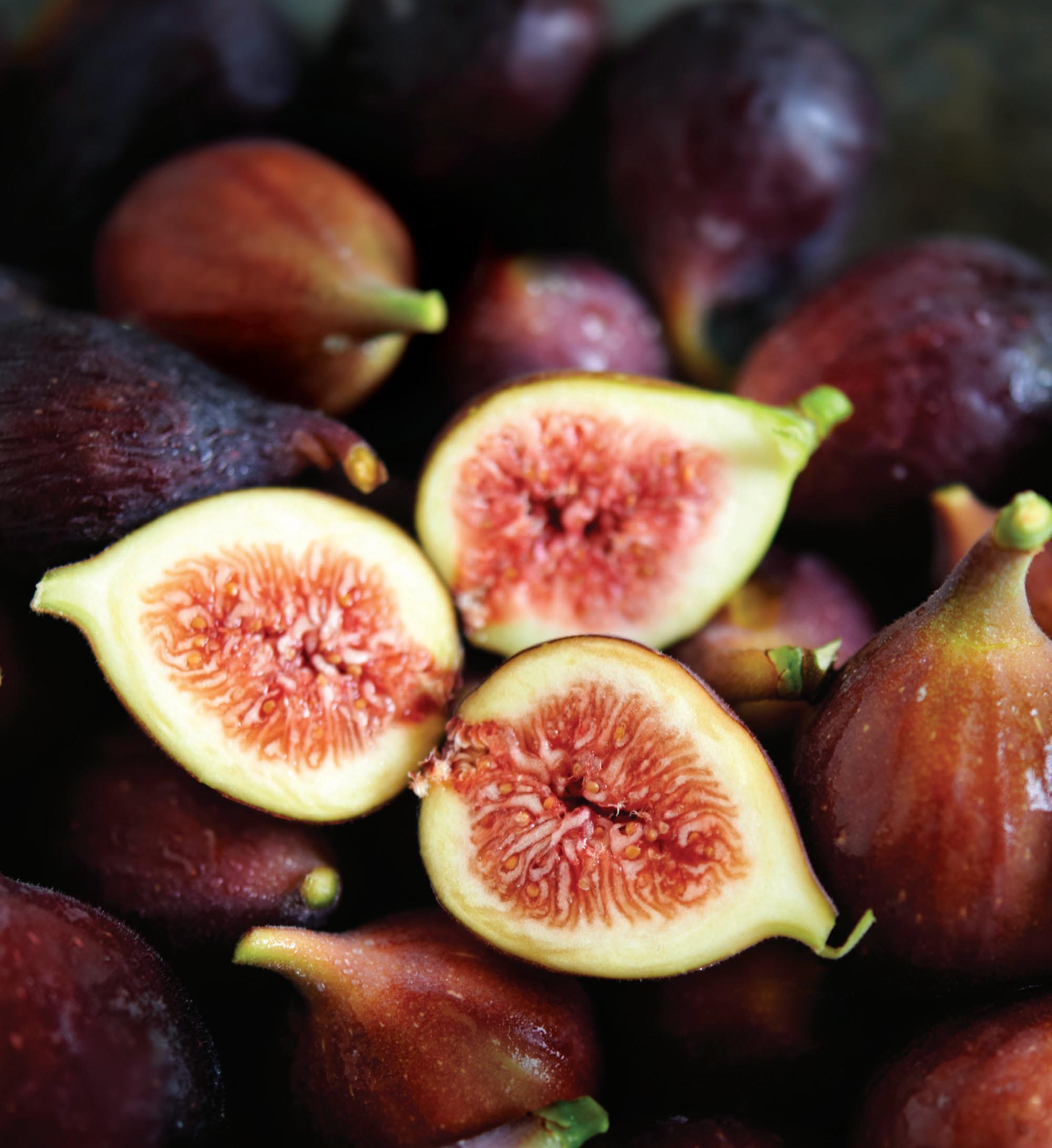
How an ancient fruit took root in the Midwest by
saucemagazine.com I SAUCE MAGAZINE I 43 September 2014
n ina Furstenau | photos by greg rannells

i van s toilov of i van's f ig f arm enjoys the fruits of his labor. Purchase s toilov's figs at tower g rove, s chlafly and Washington u niversity s chool of Medicine farmers markets.
44 I SAUCE MAGAZINE I saucemagazine.com September 2014
“ Why do you want to know about figs?” a voice asked me over the phone. It was
Monsignor Sal Polizzi of St. Roch Catholic Church in the Skinker DeBaliviere neighborhood, and he wasn’t so sure I needed to know. His fig tree, a heavy-limbed beauty that has produced a mother lode of fruit each year, has multiple trunks, graceful and twisted and dramatic, visible when the foliage drops, and leaves that slowly fan the air in the breeze. Another phone call to Ivan Stoilov of Ivan’s Fig Farm in Dittmer, Missouri, and I was beginning to wonder if there was a secret society of fig people.
“Why do you want to know about figs?” Stoilov asked. He seemed to regard me with equal suspicion.
Keep in mind, I had spent several weeks trying to reach Stoilov, leaving phone messages and emails for this article. Now I felt I had to come up with a good answer.
At such an on-the-spot moment, “I like figs” was the best I could do.
But it’s true: Fresh figs have captured my imagination and wooed my taste buds for many years. There might be no better flavor than ripe, sweet fig with a drip or two of honey.
The St. Louis area is maybe the most beguiling source of figs in Missouri. Stoilov’s and Polizzi’s fine-looking fig trees in particular had been rumored as prodigious producers of fat, luscious fruit. Plus, murmurs abound about St. Louis grandmothers with fig trees in their backyards, and neighbors who harvest basketfuls of figs in summer. St. Louis seems to provide the Missouri mother lode – I live 120 miles west of the city, near Columbia, and no figs live here. Or, at least, gardeners I know don’t typically grow them.
It’s possible this disparity can be traced to nostalgic Italian settlers in St. Louis during the 19th century and later, who appear to have planted saplings in the city but not central Missouri. Polizzi’s tree is younger, having come by way of a friend in southern Italy around a decade ago. The mother tree germinated and grew in the Sicilian town of Montelepre, birthplace of Polizzi’s father.
At St. Roch, petunias spill from makeshift pots devised from old light fixtures and the figs pop from their tree in the charming garden behind the parish house. Polizzi also
grows parsley, chicory and tomatoes, and he can produce a kaleidoscope of heritage seed packets in a brown paper sack for proof. Each November, as the garden goes dormant, Polizzi boxes up his fig tree with four standing sheets of plywood and a nailed-down top. Sometime in April, he releases the tree to the wild spring air. The boxing-up process is elaborate, but winter precautions are a must in Missouri, and this past year, even that may not have been enough: When Polizzi opened the fig box this spring after the hardest winter in years, the tree looked dead.
“I said, ‘Dear God, what’s happened to my tree?’” he recalled. “It was magnificent. It’s the center of the garden.”
But by June, in a burst of survivor spirit, his tree grew new shoots with leaf buds around its base. Similar tendrils thrust out of the thicker, hard central wood, too.
“It has a strong will,” Polizzi said. “Nine trees (elsewhere in the neighborhood) died this winter. We’ve never had that happen here.”
But fig trees grew in St. Louis long before Polizzi’s fighter. As a boy, he remembered trees growing in backyards up and down Eighth and Carr streets, five blocks north of Washington Avenue downtown. Children pulled figs off the trees as snacks while families spent time outside, especially at dinnertime for outdoor barbecues. “We had a brick oven for pizza, and my mom liked to bake bread,” Polizzi said. “Yard after yard after yard. Everybody did that.”
As he said this, he pulled a blade out of a drawer and rocked it between his palms. “This was (my mother’s) knife. It still cuts.” Fresh, ripe figs, he added, are hardly in need of a blade, something he learned in the twilight hours of dinner as a child and hasn’t forgotten.
“Sometimes,” he said, “I don’t even peel them. Sometimes I don’t even wash them.” Polizzi, who has only sprayed his tree for pests once in its lifetime, feels the taste is enough to overcome such scruples.
Bulgaria in Missouri
Though they’re somewhat difficult to grow in Missouri, the desire for fresh figs struck Stoilov, too. An 18year veteran of growing figs here, Stoilov is an organic chemist and biochemist from Bulgaria who owns Ivan’s Fig Farm. He also works at Washington University in St. Louis as a senior research scientist. At his property in Dittmer, surrounded by lush tree cover, he keeps four greenhouses of fig trees and other organic produce.
“Genetically, the taste for figs is in every one of us,” he said. “Figs are a very ancient food. We all have a taste for it. It’s why everyone probably likes (fresh) figs.”
Stoilov is likely correct. The fruit figures heavily into ancient tree lore, and may have even been among the first cultivated food 11,000 years ago in the Middle East, according to a 2006 article in Science. Many world traditions are enamored with figs: Adam and Eve, according to the Hebrew origin story, covered themselves with the leaves of the common fig tree ( Ficus carica) , which is also one of the two sacred trees (along with the olive) of Islam. The Bodhi Tree that Buddha meditated under is a sacred fig ( Ficus religiosa ), also hailed as the Ashvattha , or “world tree,” of Hinduism. Not only was the fig included among the seven foods to be found in the Promised Land, according to the Torah, it was believed by the ancient Greeks to be the gift of Demeter. It’s safe to say figs play a prominent role in human history – which certainly explains our taste for Newtons.
saucemagazine.com I SAUCE MAGAZINE I 45 September 2014

46 I SAUCE MAGAZINE I saucemagazine.com September 2014 Balsa M ic f ig Ja M with honey and black pepper reci P e on P. 49

Stoilov, who ate luscious figs in Bulgaria growing up, liked the dried variety well enough, but wasn’t totally satisfied. He wanted that fresh taste at home in St. Louis. In order to get it, he began experimenting to find the best way to grow large and delicious figs that could survive Missouri winters. He found it through science – and a bit of elbow grease.
Stoilov created a control group by planting fig trees in rows outside his greenhouses and in front of his house. Each winter, he weighs them down and mulches them.
“I bend the branches down and cover them with leaves (in late fall),” Stoilov said. “I put the coarse leaves on the bottom and the mulched leaves on the top so the wind doesn’t move them.” The leaves keep a layer of air between the constant ground temperature of 55 degrees and the fig tree branches. The biodegrading, composting leaves generate heat as well. Southward-facing exposure to the sun is best.
But he wanted a less labor-intensive way to grow the taste of home. “I decided to really go into it and applied for a (Sustainable Agriculture Demonstration Award) grant in 2005. I got it right away.”
Since receiving that grant from the Missouri Department of Agriculture, Stoilov has tried heating his greenhouses in winter with spent cooking oil, and more recently with a modified passive heat exchange using what he called a “geosolar heat sink”: 5,000 feet of layered pipes 3 feet under his greenhouses.
It’s easy to see (and taste) the success Stoilov has had. Even this year, the fig trees seemed happy with the temperature – the harvest has vouched for this – but Stoilov still checked it with a thermometer on a string. He stood over a vent as a fan helped trap the heat underground, dangling the thermometer for a moment and squinting at the reading; satisfied, he pulled the gauge back up.
“I like the dark purple figs – big, wide and delicious,” Stoilov said as he pointed to a newly leafing tree in March. “(Under) every leaf there is a fig.” Indeed, in his greenhouses, his trees can grow 10 to 15 feet in a year, with a fig growing at the base of each leaf.
n eigh B orhood figs
Tree lore and humanity’s shared fig interest seems to have struck Joe Gudiswitz, too. A civil engineer by day and husband of Sauce executive editor Ligaya Figueras, Gudiswitz grows figs in the family’s backyard in St. Louis city. He likes the idea of a garden as a “collection of curiosities,” and started with two Turkish Brown fig trees. “They grow like a weed,” he said, “with shoots a little like grapes.”
His garden is shady and his fig trees are not prolific. “The (fruit) basically goes hand to mouth. There’s so few of them.” So far, he said, the birds haven’t discovered them, though a nearby peach tree may serve as a distraction. Again, southward-facing exposure to the sun and more heat would help the harvest, he added. “The (fig trees) definitely like hot summers.”
Gudiswitz also weighs the limbs down and covers them with leaves each fall for protection from the cold. This winter, the prolonged cold kept the trees dormant longer in the spring. Though the larger hardwood on his fig trees didn’t make it through, by mid-summer Gudiswitz had fig buds. “They’re forgiving with a little bit of care,” he said. “They are a pretty plant. I always liked (having) a little bit of the Mediterranean in the alley.”
Another local fig tree enthusiast, Sauce photographer and food lover Greg Rannells, has two Chicago Hardy fig trees which, optimized for cold weather and left untended, grew 16 feet tall one year in his yard in Maplewood. “I felt like a monkey getting the fruit off the branches.” Now, he prunes. “This year, (the trees) are 8 feet tall. I typically get about 650 figs per tree.” While new growth normally emerges from the trunk structure on Rannells’ trees, after this winter, most of it is coming up from the ground around the tree. This has made his trees more like bushes, but the leaves and fruit buds still showed good signs in early August.
Once again, the key seems to be sunny southern exposure. His flagrant fig proficiency helps corroborate the rumors of abundant fig growth in St. Louis. For Rannells, the key driver is flavor.
“Honestly,” he said, “Most people have never had a fresh fig, and when they do, they’re astonished.”
Bucket B rigade
Chef-owner Josh Galliano of The Libertine in Clayton does not grow figs in St. Louis, but early fig picking left its mark on him, as with Stoilov and Polizzi. Galliano had his first experiences as a child 30 miles west of New Orleans, where there was a short fig season in July from the first through the middle of the month. “It was so hot, the fruit was fermenting on the trees,” he said. “Wasps and birds were after them.”
He picked the figs in 5-gallon buckets, munching as he went, to use in his grandmother’s fig preserves, which were spread over her biscuits. (Both went well with her skillet-fried ham.) After picking the 12 to 16 quarts needed for the preserves, Galliano would be coated in a latex-like sap. “The sweetness was almost soda-like. It’s a fleeting flavor: floral, light, not on the tongue long.”
Today at The Libertine, in part because of those moments with figs, Galliano focuses on food and memory. “I try to make food that’s fun and nostalgic,” and figs, too, make their way onto the menu. “I make fig preserves with balsamic, orange zest and either cinnamon or anise. It’s one component of the dish – good on foie gras or pork. I add extra balsamic and honey to spread it on pork loin.”
He finds that, sometimes, simple is best. “Black mission figs can be coated with powdered sugar or sugar in the raw, but it’s more for presentation.” Figs are usually such a soft fruit, he said, that simply wedging them, coating them with a bit of sugar, and blow-torching them to give them a little crunch is enough.
When in season, figs show up on The Libertine’s menu. Galliano contacts local fig growers like Stoilov when possible, or even goes south to his father’s home in Louisiana to retrieve that flavor. “My dad will pick and freeze figs for me,” he said. “I get about 10 pounds of figs each time.”
For Polizzi, Stoilov, Gudiswitz, Rannells and Galliano –fig lovers all – the little extra tending or fetching needed for fresh fig taste in Missouri makes for hard, if worthy, work. Those of us in central Missouri may just need a better garden work ethic.
Nina Furstenau is the author of Savor Missouri: River Hill Country Food and Wine and the memoir Biting Through the Skin: An Indian Kitchen in America’s Heartland, which won the Les Dames d’Escoffier International M.F.K. Fisher Book Award and Grand Prize Award for 2014. She lives in central Missouri, fretfully tending her first fig tree.
saucemagazine.com I SAUCE MAGAZINE I 47 September 2014
t. r och
Monsignor s al Polizzi of
s
c atholic c
hurch

P a i n P erdu with fig and balsamic preserves, coffee gastrique and dried Turkish figs reci P es on P. 49
48 I SAUCE MAGAZINE I saucemagazine.com September 2014
reci P es
pain pERdu with Fig and balSamic pRESERvES, coFFEE gaStRiQuE and macERatEd tuRkiSh FigS
4 SERvingS
Courtesy of The Libertine’s Josh Galliano
1 loaf brioche or challah
2 eggs
½ cup cream
½ cup milk
¼ cup sugar
1 tsp. vanilla extract
½ tsp. cinnamon
pinch nutmeg
1 tsp. orange zest
4 Tbsp. unsalted butter
1 cup fig and balsamic preserves (recipe follows)
6 tsp. coffee gastrique (recipe follows)
16 macerated Turkish figs (recipe follows)
• Cut four slices of brioche about ½-inch thick. Trim the crust from each slice to form a square. Set aside.
• Mix together the eggs, cream, milk, sugar, vanilla extract, cinnamon, nutmeg and orange zest. Place this custard mixture into a shallow 9-by13-inch casserole dish. Place the brioche squares in the casserole dish so they fit snugly and are in contact with the custard.
• Soak the bread 30 minutes. Flip each slice and soak another 30 minutes.
• Preheat the oven to 375 degrees.
• In a large saute pan over medium heat, melt the butter until frothy. Remove the brioche from the custard, allow to drain briefly, then place it in the pan. Cook 3 to 6 minutes, until the bread is browned underneath. Flip and cook about 5 minutes, until the second side is browned. Transfer the bread squares to a baking sheet and bake 10 minutes.
• On each of four serving plates: Place ¼ cup fig preserves in the center of the plate. Top with a slice of brioche.
Drizzle with 1½ teaspoons of coffee gastrique and place four macerated Turkish figs around the brioche.
Fig and balSamic pRESERvES
2 to 2½ cupS
Courtesy of The Libertine’s Josh Galliano
2 cups sugar
½ cup balsamic vinegar
1 strip of orange peel
2 Tbsp. orange juice
1 whole star anise
¼-inch piece cinnamon stick
2 lbs. fresh black mission figs, stemmed and halved
• In a medium-sized pot, combine all ingredients except the figs. Cook over medium heat until a syrup forms and begins to boil.
• Add the figs and return to a boil, then reduce the heat to medium-low and simmer 15 minutes. The preserves should be thick and not runny. When finished, transfer the preserves to a storage container, allow to cool and seal. The preserves will keep, refrigerated, up to 7 days.
coFFEE gaStRiQuE
½ cup
Courtesy of The Libertine’s Josh Galliano
½ cup honey
½ cup sherry vinegar
juice of half a lemon
2 Tbsp. kaldi’s whole coffee beans
1 sprig fresh thyme
• In a small pot, bring all the ingredients to a boil over medium heat. Reduce heat to medium low and simmer 10 minutes, until the gastrique is as thick as honey. Use a small sieve to strain the gastrique into a storage container, allow to cool and seal.
The gastrique will keep, refrigerated, up to 2 weeks. When serving after refrigeration, microwave until warm.
macERatEd
tuRkiSh FigS
makES 16
FigS
Courtesy of The Libertine’s Josh Galliano
16 dried Turkish Figs, stemmed
1 cup port
1 cup boiling water
• Place the dried Turkish figs in a small, heat-proof glass container. Pour the port over the figs, then add the hot water. Fully submerge the figs using a spoon or small plate. Let the figs soften in the liquid about 2 hours; they may be stored in the liquid until ready to use. The figs will keep, refrigerated, up to 4 days.
Fig lEaF-inFuSEd Panna Cotta
4 SERvingS
Courtesy of Greg Rannells
2 sheets leaf gelatin*
2 cups half-and-half
¾ cup sugar
2 to 3 fig leaves (can be frozen)
¼ tsp. kosher salt
½ vanilla bean
• Submerge gelatin in a bowl of cold water for 10 minutes.
• Meanwhile, in a small pan over high heat, combine the half-and-half and sugar and let simmer until the sugar dissolves. Remove from heat. Add the fig leaves and salt. Split and scrape the seeds from the vanilla bean and add them and the pod to the pot. Steep 20 minutes, then remove and discard the fig leaves, vanilla bean and vanilla seeds.
• Remove the gelatin and gently squeeze to remove the excess water. Add the gelatin to the warm infusion and whisk until dissolved. Strain the mixture through a fine-mesh sieve, then divide it equally into four 8-ounce ramekins. Refrigerate panna cotta until set, about 4 hours.
*Available at Kitchen Conservatory, 8021 Clayton Road, Clayton, 314.862.2665, kitchenconservatory.com
balSamic Fig Jam with honEy and black pEppER
6 8-ouncE JaRS
Courtesy of Greg Rannells
4 lbs. fresh figs, quartered and stemmed
2 cups sugar
½ cup honey
2 cups balsamic vinegar
1 vanilla bean, split
2 tsp. freshly ground black pepper
½ cup fresh lemon juice
• In a large shallow-rimmed saucepan, combine the figs with 2 cups water over medium-high heat until softened, about 8 to 10 minutes. Smash the figs with a spoon and stir until combined. Add the sugar, stirring, until dissolved. Add the honey, the balsamic vinegar, the vanilla bean and seeds and the black pepper. Cook, stirring to avoid burning, until the mixture reduces and thickens to a syrup, about 20 minutes. The jam is ready when it coats the back of a spoon and does not combine again when a finger runs through it. Remove from heat, stir in the lemon juice and allow to cool.
• Divide the jam equally between six 8-ounce canning jars, leaving about ¼-inch of head space at the top of each jar. Seal with lids and refrigerate. The jam will keep, refrigerated, for several months.
saucemagazine.com I SAUCE MAGAZINE I 49 September 2014


STUFF TO DO: THIS MONTH
B y By R on Ke RMA n

Missouri outdoor gourmet experience
Sept. 6 – noon to 6 p.m., randall’s Wines and Spirits, 14201 manchester road, manchester, 636.527.1002, shoprandalls.com
Get fancy in the forest with recipes learned and sampled at the Missouri Outdoor Gourmet Experience. Chefs from Annie Gunn’s Smokehouse, Cielo, LoRusso’s Cucina, Mike Shannon’s Steaks & Seafood and Truffles use camping equipment from Cabela’s to whip up rustic delights for sampling. You can also try lots of wines, spirits and beers and shop at a local farmers market. Proceeds go to the Missouri Conservation Department, and the freebies and giveaways abound.

chuseok Korean Festival
Sept. 6 – noon to 7 p.m., mcgrath elementary School, 2350 St. clair ave., brentwood, 314.681.6462, gateway-korea.org
Eat bulgogi, kimchee and sweet rice cakes known as song pyon at Chuseok, the first Korean harvest festival in STL. The Gateway Korea Foundation offers traditional Korean dishes for sale at the festival, as well as music, dance, folk games, kite making and taekwondo demonstrations.

st. louis craft spirits & cocktail Week
Sept. 13 to 21 – times and locations vary, 314.231.2537, squareonebrewery.com
The third annual St. Louis Craft Spirits & Cocktail Week is a bonanza of boozy fun, including the Classic Cocktail Party at Lafayette Park, Smoke ‘N Whiskey with a release of the new Soulard Island Rum at Gran Cru Cigars, Gin Night with Pinckney Bend and Spirits of St. Louis at Natasha’s Gin Room, tours at local distillers, an infusion class at Square One, the St. Louis Bartenders Guild’s Punch in the Park, a local liquor
and Fountain on Locust.
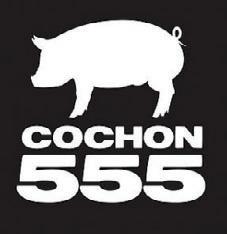
Sept. 14 – 5 to 7:30 p.m., Four Seasons hotel - St. louis, 999 n. Second St., St. louis, cochon555.com
Cleveland and Eric Heath of Cleveland-Heath, Gian Colucci of Cielo, Patrick Connolly of Basso, Josh
of The Libertine and Lou Rook of Annie Gunn’s Smokehouse will show off their skills at Heritage BBQ by Cochon 555. Each chef is given a 200-pound heritage breed pig to create six dishes at an allyou-can-eat party. Guests can also enjoy pop-up BBQ Traditions, where local chefs demonstrate barbecue styles from around the world. Also in store: rare beers and ales from Goose Island, a live butchering demonstration, a “Perfect Manhattan” bourbon bar and “Swine & Sweets” desserts by James Beard award-winner Jeni’s Splendid Ice Creams.

taste of st. louis
Sept. 19 – 4 to 10 p.m., Sept. 20 – 11 a.m. to 10 p.m, Sept. 21 – 11 a.m. to 9 p.m., chesterfield central park and amphitheater, chesterfield, 314.524.2100, tastestl.com
Taste of St. Louis is heading west for three days of fun in Chesterfield. The 10th annual festival features appearances by Food Network celebrity chefs Tyler Florence and Duff Goldman, an Art & Wine Walk, the Stella Artois Chef Battle Royale, culinary demos, Kid City, live music by Big Head Todd & The Monsters and The Urge, and
Denotes a Sauce sponsored event.
50 I SAUCE MAGAZINE I saucemagazine.com September 2014
cocktail takeover at Mission Taco and “Spirited Dinners” at Juniper, Prasino, Square One
Heritage BBQ by cochon 555
Jenny
Galliano
Sauce Magazine Restaurant Row, with more than 35 restaurants offering bite-size portions for sale this year.

apple Festival
Sept. 28 – 11 a.m. to 3 p.m., pere marquette lodge, 13653 lodge blvd., grafton, illinois, 618.786.2331, pmlodge.net
The pumpkin roll at the Apple Festival at Pere Marquette Lodge is no joke. If your pumpkin reaches the bottom of the hill first, you win a night’s stay at the lodge, perched on the Mississippi River bluffs. (You can BYOP, so maybe fill one with lead?) Other fun includes warm apple pie, an apple pie walk (it’s like a cake walk), hand-dipped caramel apples, tastings of apple wine, fresh produce, kids’ activities and live music.
sponsored
events
schlafly art outside
Sept. 5 – 5 to 10 p.m., Sept. 6 – 10 a.m. to 10 p.m., Sept. 7 – noon to 4 p.m., Schlafly bottleworks, 7260 Southwest ave., maplewood, 314.241.2337, ext. 2, schlafly.com
More than 50 local artists descend upon Southwest Avenue and the Schlafly Bottleworks parking lot to showcase their very best creations during a three-day juried art fair. Enjoy live music while you stroll the rows in the late-summer sun, then feast on Schlafly Bottleworks food and brews.
sauce Magazine’s Food truck
Friday
Sept. 12 – 4 to 8 p.m., tower grove park, St. louis, 314.772.8004, saucefoodtruckfriday.com
Head to Tower Grove Park for Food Truck
Friday, with more delicious options and features this year. Find sangria, St. Louis Earth Day recycling stations and more. Proceeds from beer sales benefit Lift for Life Gym. If you’re hungry and in a hurry, stop by the Sauce tent for a Speed Pass, which enables holders to use expedited lines for ordering. Come early and bring lawn chairs, blankets, kids and dogs.
glennon gallop
Sept. 13 – 3 p.m., kraftig polo club, 4020 benne road, defiance, 314.577.5605, glennon.org/glennongallop
Don your whites and head to Kraftig Polo Club for an afternoon of fun for a good cause at Glennon Gallop. Watch worldrenowned polo player Nacho Figueras compete with area polo players. Purchase your tickets for the Sauce Picnic Basket, which includes general admission and parking, as well as a bottle of wine and a basket of cheeses, charcuterie and crackers. Proceeds from the event benefit Danis Pediatrics at SSM Cardinal Glennon Children’s Medical Center; tickets available online.
international Food Festival
Sept. 13 – 11 a.m. to 8 p.m., edwardsville city park, 112 S. buchanan St., edwardsville, 217.855.6799, edglenhabitat.org
Take your taste buds on a trip around the world without leaving Edwardsville at the International Food Festival. Try Brazilian flavors by Yemanja, the Turkish cuisine of Aya Sofia, Korean food from Oriental Spoon and more. Get your beer and wine from the Global Brew tent, and enjoy live entertainment, including salsa dancing. Proceeds benefit Habitat for Humanity.
cystic Fibrosis Foundation Wine opener
Sept. 19 – 7:30 to 10 p.m., the moto museum, 3441 olive St., St. louis, 314.733.1241, gateway.cff.org/wineopener
Prep your palate for a night of wine tastings to benefit the Cystic Fibrosis Foundation. More than 40 wines will be
available to sample while you nosh on light appetizers from Triumph Grill. Live and silent auctions, as well as raffles, will also take place. Tickets available online or at the door.
oktoberfest st. louis
Sept. 20 – 11 a.m. to 11 p.m., Sept. 21 – noon to 7 p.m., urban chestnut biergarten, 3229 Washington ave., St. louis, 314.222.0143, urbanchestnut.com
The brew crews at Urban Chestnut and Schlafly join forces for the epic beer holiday of Oktoberfest. Six styles of German beer will be available, including Kölsch, Schwarzbier, Weissebier and dunkel. Stuff yourself with bratwurst, currywurst and pretzels, and dance off all that heavy German fare with live music. Buy a commemorative glass stein to receive discounted beer refills.
cruising with the chefs
Sept. 23 – 6:30 p.m., Four Seasons hotel - St. louis, 999 n Second St., St. louis, 877.776.4300 ext. 1, cruisingwiththechefs.com
Curious what it would be like to hit the high seas with some of your favorite local chefs? Join chefs Gian Nicola Colucci of Cielo, Josh Galliano of The Libertine and Lou Rook III of Annie Gunn’s for an evening of culinary demonstrations, wine tastings and passionate travel discussion at the Four Seasons Hotel downtown. Chefs will prepare food to sample as they share information on upcoming chef-led Oceania Cruises in 2015 and 2016.
Wine & dine with sauce Magazine
Sept. 26 – 6:30 to 8:30 p.m., dierbergs, 1080 lindeman road, des peres, 636.812.1336, dierbergs.com/school.aspx
Join Sauce executive editor Ligaya Figueras, art director Meera Nagarajan and wine writer Glenn Bardgett as they host a cooking class featuring recipes and drinks from the latest issue of Sauce. Get the scoop on the newest restaurant openings and the latest trends. Class limited to 24 people; register online.
Beer Baron’s tour
Sept. 27 – 4 to 6 p.m., bellefontaine cemetery & arboretum, 4947 W. Florissant ave.
St. louis, 314.381.0750, bellefontainecemetery.org
On this guided bus tour, you will hear the stories of St. Louis beer barons and baronesses who built the St. Louis beer scene and see their tombs. A commerative tasting glass lets you sample local microbrews while you enjoy live music and, in true beer-food fashion, enjoy a bratwurst and burger buffet. Tickets available online.
carts
& cocktails
Sept. 27 – 6 to 10 p.m., laumeier Sculpture park, 12580 rott road, Sunset hills, 314.615.5278, laumeier.org
Zip around the sculpture park in golf carts to view the stunning works of art on display. While you’re crusing, make pit stops at four stations to get your fill of food, cocktails and live music.
schlafly Farmers Market
Wednesdays through october – 4 to 7 p.m., Schlafly bottleworks, 7260 Southwest ave., maplewood, 314.241.2337 ext. 2, schlaflyfarmersmarket.com
Wednesday evenings, part of the Schlafly Bottleworks parking lot transforms into a farmers market brimming with meat, eggs, produce, herbs, baked goods and more. Dozens of vendors are on rotation, including Blue Heron Orchard, Hosco Farms and Ozark Forest Mushrooms. Every third Wednesday of the month brings cooking demos by local chefs; this month, Niche’s Nate Hereford takes a turn.
Midtown Farmers Market
Saturdays through november – 8 a.m. to 12:30 p.m., 6655 delmar blvd., university city, 314.913.6632, Facebook: midtown Farmers market
Grab your tote bag each Saturday morning and stuff it with produce, meat, eggs, baked goods, pantry perks and more from local farmers and artisans. Recent vendors on rotation have included Biver Farms, Eilerman Bros. Orchards, Great Harvest Bread Co., and Midwest Lamb.




saucemagazine.com I SAUCE MAGAZINE I 51 September 2014
Connect with us! facebook.com/ saucemagazine instagram.com/ saucemag pinterest.com/ saucemagazine twitter.com/ saucemag
What i do nora brady

In four short years, Nora Brady, 24, has gone from working as a barista at Kaldi’s to co-owning Blueprint Coffee, one of the top cafes (and roasters) in town, and taking sixth place nationally at this year’s U.S. Barista Championship finals. Here, Brady gives us the full scoop on why she loves the daily grind of the coffee world.
What intrigues you about coffee? That it comes from the earth. We can alter a few things about it, and science plays a huge part in it, but really, it’s an organic product.
What was it like to compete at the U.s. Barista championship? It was my third year competing. You work hard all year and go through intense training. (The) finals were really surprising. I felt more confident this year than I ever had, but I had a lot of things go wrong.
What went wrong?
Before your 15-minute presentation, you have 15 minutes to set up. We bring all of the equipment we’re using. When I was wheeling my cart out, I had my milk for my cappuccinos on top of the cart. I hit a bump and all of the milk spilled throughout my cart on everything. You bring extras of everything, so I had to run across the room and grab all the stuff that I needed. I thought for sure that I was toast. But they called my name. I advanced to the (next) round.
you have to make a signature coffee drink as part of the competition. What was yours? I macerated raw beets (to make) a beet syrup. A little bit of Meyer lemon for balance. Four shots of Victor Milano espresso, but I chilled the espresso and skimmed the crema off of it – it basically pulls all the bitterness off the coffee. The whole drink was cold. I charged with an iSi charger. So it was this “espressoda” –effervescent, super creamy. It was like drinking velvet.
What’s the trendiest order at Blueprint right now? Cortado. They look awesome and they are the perfect ratio (of coffee to milk).
What coffee trend do you predict is on the horizon? Coffee cocktails. Not alcoholic, but coffee cocktails. I think the industry is super interested in using coffee as “the strong” and diversifying our offerings. We’re about to roll out a new cocktail menu all designed around the specific coffee.
What’s the weirdest order you receive? I always think it’s weird when someone wants an iced cappuccino, but they want you to steam the milk and pour the whole drink over ice.
Most annoying order? A flat white. It’s an Australian-European drink that’s essentially just a wet latte, so no froth, and it’s a weird size – like an 8-ounce drink. People come in and they want a flat white, but they all want it different. Nobody really knows what they’re ordering. They just heard about it.
What do you order? Brewed coffee and a shot of espresso.
How many coffee makers do you have at home? I’m trying to visualize the shelf. Probably 10 or 12.
Which one is your favorite? Chemex, hands down. It’s a single vessel and easy to clean.
How much coffee a day do you drink? A 12-ounce cup in the morning. You taste the espresso throughout the shift – that’s a lot of espresso. And I make myself an espresso to go home because I’ve got a lot of stuff to do.
– Ligaya Figueras
52 I SAUCE MAGAZINE I saucemagazine.com September 2014 P H oto by as H l E y G i E s E kin G
Blueprint Coffee 6225 delmar Blvd., st. louis, 314.266.6808, blueprintcoffee.com
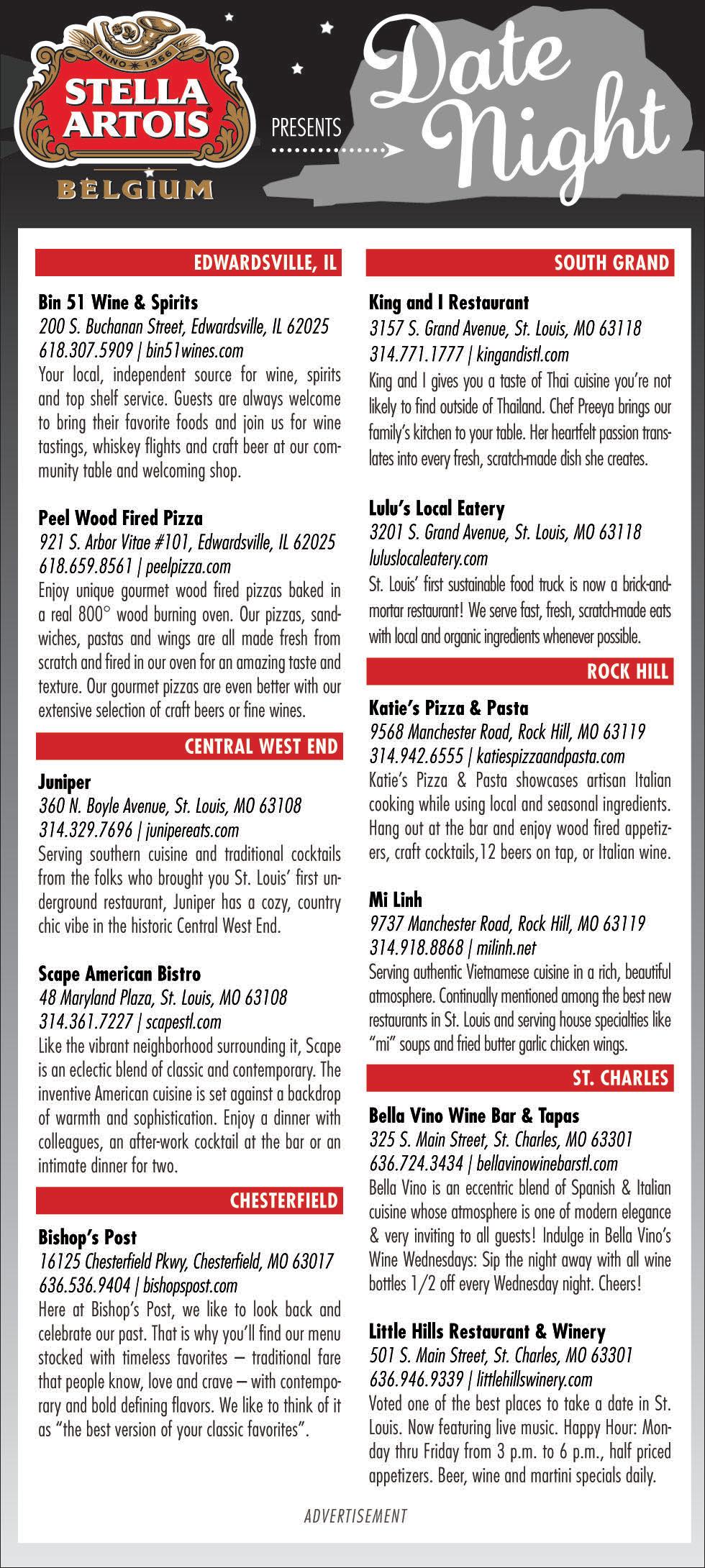



saucemagazine.com I SAUCE MAGAZINE I 53 September 2014 P H oto by as H l E y G i E s E kin G

guide to drinking
FREE, GUIDE to D r IN k ING 2014 SAUCEMAGAZINE.Co M St. Lo UIS’ INDE p ENDEN t CULINA ry AU thor I ty

2 I SAUCE MAGAZINE I saucemagazine.com Guide to Drinking 2014
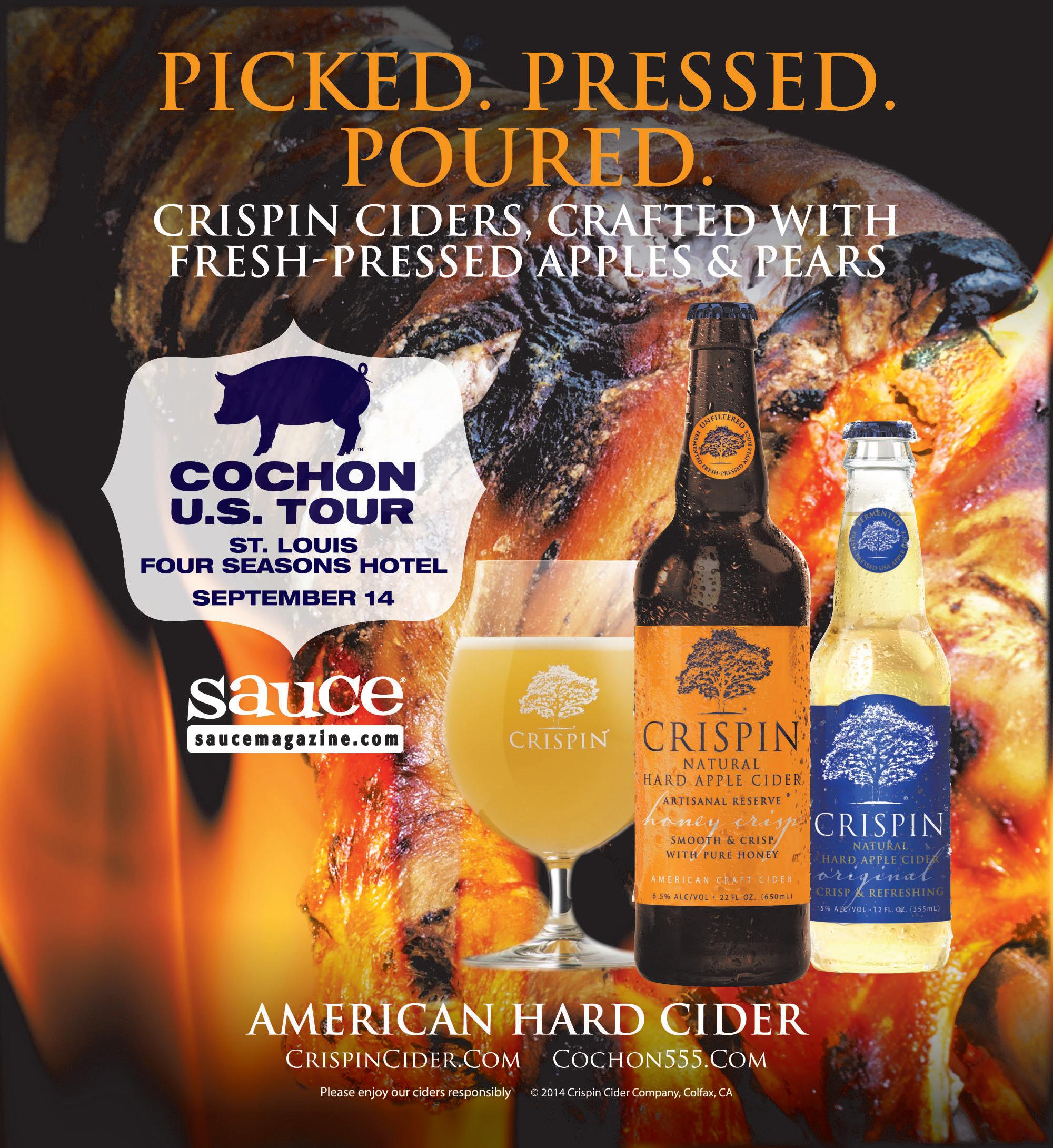
saucemagazine.com I SAUCE MAGAZINE I 3 Guide to Drinking 2014

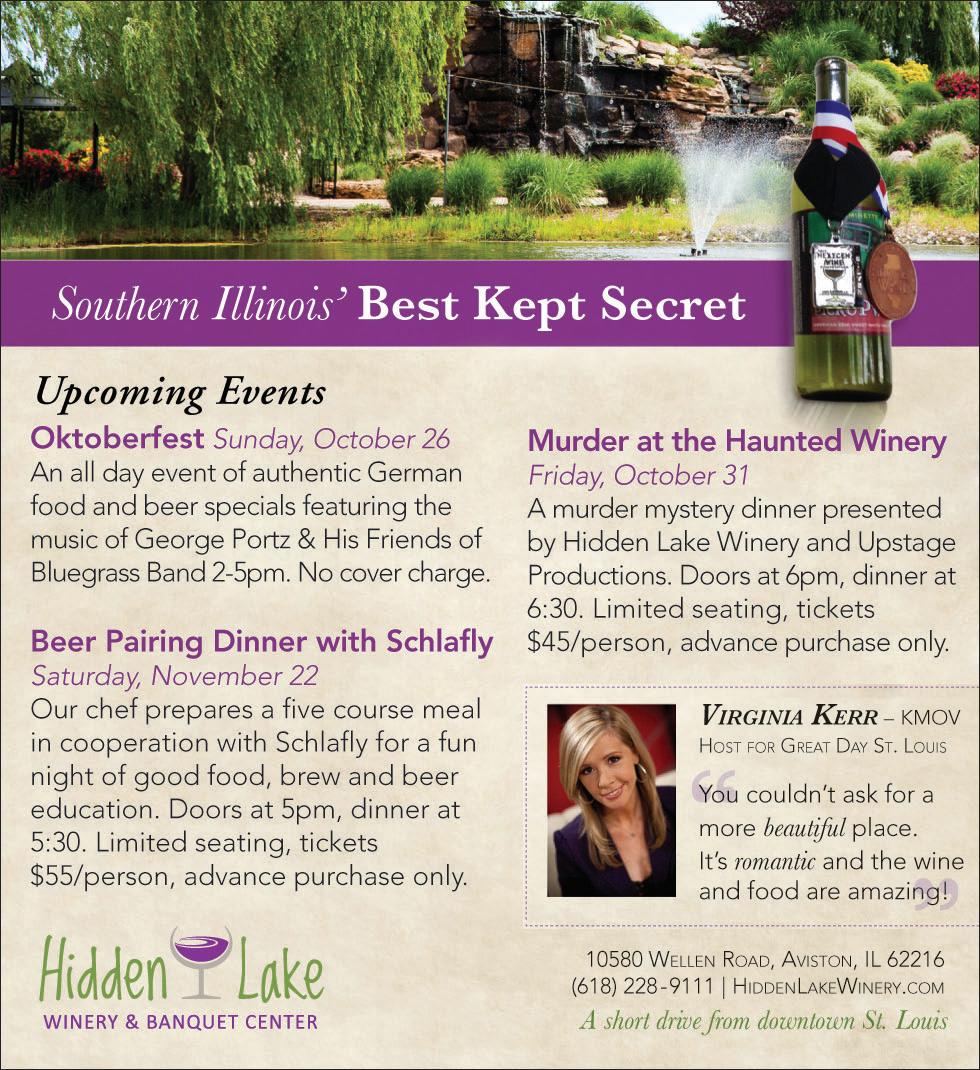

4 I SAUCE MAGAZINE I saucemagazine.com Guide to Drinking 2014 cherry
c A r M e N troe SS er
Photo
by
Make your own alcoholic cherry bomb. Go to saucemagazine.com/blog this month to get a recipe for homemade amaretto that calls for cherries along with the requisite almonds and fruit pits.
Cherry bomb
guide to drinking edition
By ligaya FiguERas

Cherry is the lush’s fruit of the moment, and choices abound. There’s Kasteel Rouge cherry beer, St. Louis Kriek lambic, Original Sin cherry cider, Berentzen wild cherry liqueur and Montelle Winery cherry brandy, winner of a best of class and a gold medal in the distilled product category at the recent 2014 Missouri Wine Competition. Mikkeller’s one-off lambic Spontan Cherry Frederiksdal is long gone, but beer lovers can look forward to the December or January release of 4 Hands Cuvee Diable, a barrel-aged version of its sour cherry saison, Prunus.
Strange syrups
If you think the flavor wheel for vodka is out of control, take a look at the current syrup spectrum. Among the wild and whacky scratch syrups claiming space behind local bars, we’ve seen smoked corn at Juniper, Sriracha-honey at Cielo and toasted celery seed-fennel syrup at Taste. House syrups are also getting pumped into boozy (or not) snow cones at newly opened Peacemaker Lobster & Crab Co.; with chef-owner Kevin Nashan as the mad scientist behind this project, there’s no telling what offbeat syrup might get cooked up.
Coffee and tea get a green card
t he art of the tonic
You can stop for a housemade soda at loads of bars around town. For a different journey, jump on the artisan tonic train. Among Juniper’s mocktails, dubbed “sparklers,” you’ll find the option of a house tonic syrup doctored with dashes of nonalcoholic plum, grapefruit and cherry bitters topped with fizzy sparkling water. Meanwhile, in Lake Saint Louis, the bar crew at BC’s Kitchen has taken a page from the cook’s book by whipping up à la minute gin and tonics with the help of a soda siphon. Finally, at The Gin Room at Cafe Natasha’s, home to a number of house tonics, tonic-making is such an art that they are offering tonic-making workshops beginning Sept. 24.
Coffee and tea have migrated onto cocktail menus in the last few years. But now it’s official: they are citizens of the cocktail menu. You’ll find tea taking up residence at Cielo (in Earl Grey Chaos, a combination of an Earl Grey-black pepper infused gin, limoncello, lemon juice and simple syrup served on Earl Grey ice cubes), at Juniper (in Tennis With Hemingway, a mixed drink that uses tea syrup with gin and yellow chartreuse) and in the tea cocktails at newly opened MaryAnn’s Tea Room in the C entral West E nd . Java addicts who need a jolt of caffeine in more than their morning brew can get their fix with cocktails featuring cold-brew coffee at Planter’s House , Taste and Small Batch . And this month, those riding the latest wave in the coffee world will want to hit up Blueprint Coffee for its debut nonalcoholic coffee cocktail menu.
For more about offerings at MaryAnn’s Tea Room and Peacemaker Lobster & Crab Co., turn to p. 14 in the main issue.
saucemagazine.com I SAUCE MAGAZINE I 5 Guide to Drinking 2014
cherry Photo by c A r M e N troe SS er



6 I SAUCE MAGAZINE I saucemagazine.com Guide to Drinking 2014
guide to drinking edition
pagE 2 oF 2

Drinking weed
Some people mow down dandelions. Others eat them. And then there are those who use the plant for booze. Following the national trend of using foraged ingredients for housemade elixirs, The Fortune Teller Bar on Cherokee Street has concocted a house-made dandelion tincture that adds vegetal tang to a reverse martini called Summer Switch No. 2. Meanwhile, look for the release by midOctober of Lion’s Tooth, a dandelion liqueur made with dandelion roots and Crown Valley brandy. The liqueur is a collaboration between Water Street in Maplewood and the Ste. Genevieve distillery.

Brewers have answered the call for beer that you can drink and drink some more. It’s out with the double and triple IPAs and in with sessionable suds. We’re familiar with Schlafly Sessions IPA and Founders All Day IPA, but in the last year, we’ve also seen Stone Go To IPA, Goose Island Endless IPA, Lagunitas DayTime IPA and Boulevard Pop-Up Session IPA arrive on the scene
Choose your own booze adventure

The spirit of Korea takes flight
Soju, the best-selling alcohol in the world, is making a splash in the Gateway City. The Korean spirit distilled from rice is traditionally consumed straight, but from London to NYC to San Francisco, bartenders are mixing the low-alcohol liquor into everything from aperitifs to slushies. Locally, The Purple Martin bar manager Joel Clark prepared herb-steeped soju for a multi-course Asian-themed dinner held this summer at the Fox Park bar and restaurant.
Alpine aperitif
Génépy, the alpine herbal liqueur reminiscent of green Chartreuse, has jet-setted from French ski resorts to St. Louis bars. For a taste of the French liqueur, head to Small Batch and order Bright, which features genepy with rye whiskey, housemade wormwood bitters, lemon and cava. At Taste, you’ll get génépy when you order Gimme Samoa, a combination of rum, cognac, génépy, crème de cacao, pineapple and lime juice. Meanwhile, bartenders at Planter’s House are génépy-happy with drinks like Eight is Enough and Unusual Suspects.
Has it been years since you had your nose in a Choose Your Own Adventure book? Time to join the adult version of that club. Lots of bars around town are offering build-your-own cocktails, and no matter your poison, there’s a drink adventure in store for you. If gin is your thing, build your own G&Ts at The Gin Room at Cafe Natasha’s . At Bar Italia , you can have your spritz – a classic northern Italian combination of amaro and prosecco – just the way you like it (and if you head there during happy hour for 5 O’Clock Spritz, you’ll get free plates of antipasti). At Boogaloo , they’re still building mojitos your way through September; then it gives way to a maze of Manhattans. Finally, at Cielo , you can build your favorite cocktail using its house barrel-aged spirits.
For more on barrel-aged spirits at Cielo, turn to p. 31 in the main issue.
saucemagazine.com I SAUCE MAGAZINE I 7 Guide to Drinking 2014
d ay beer believers

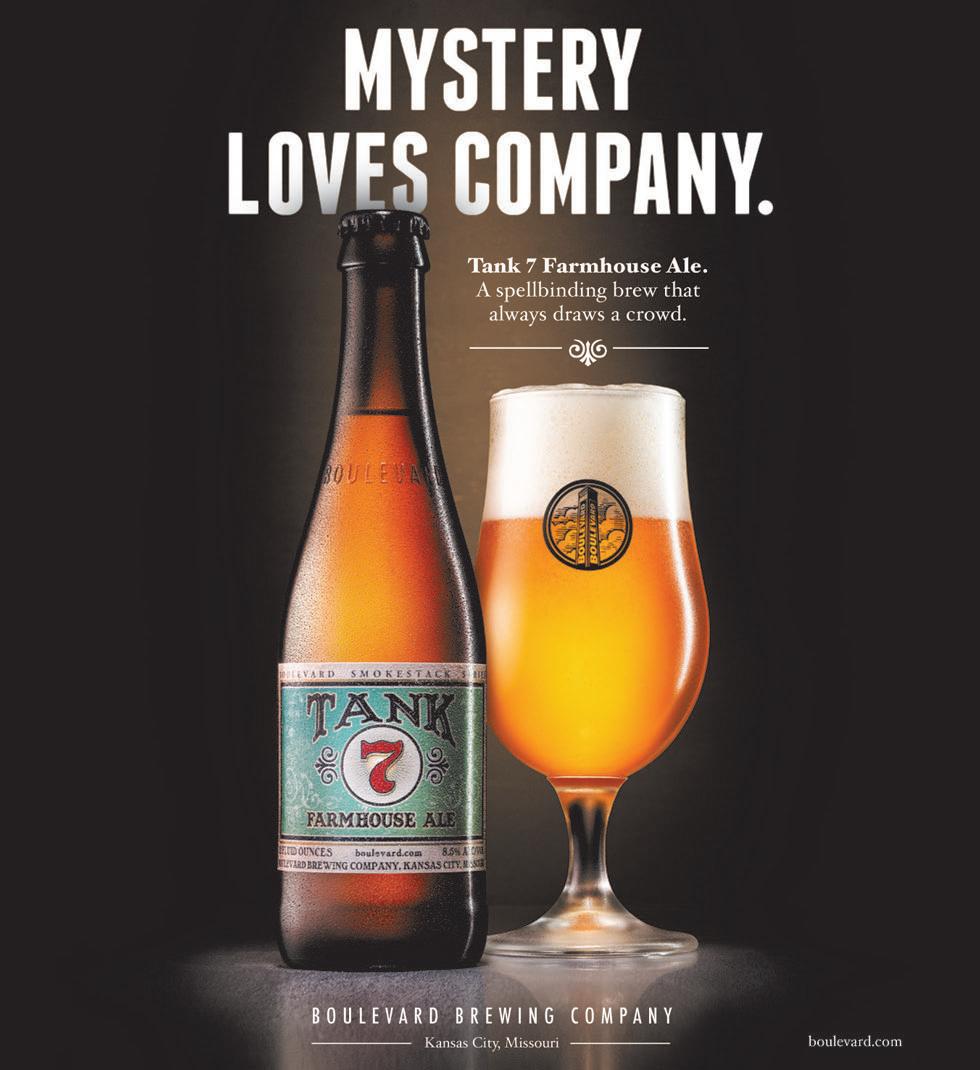
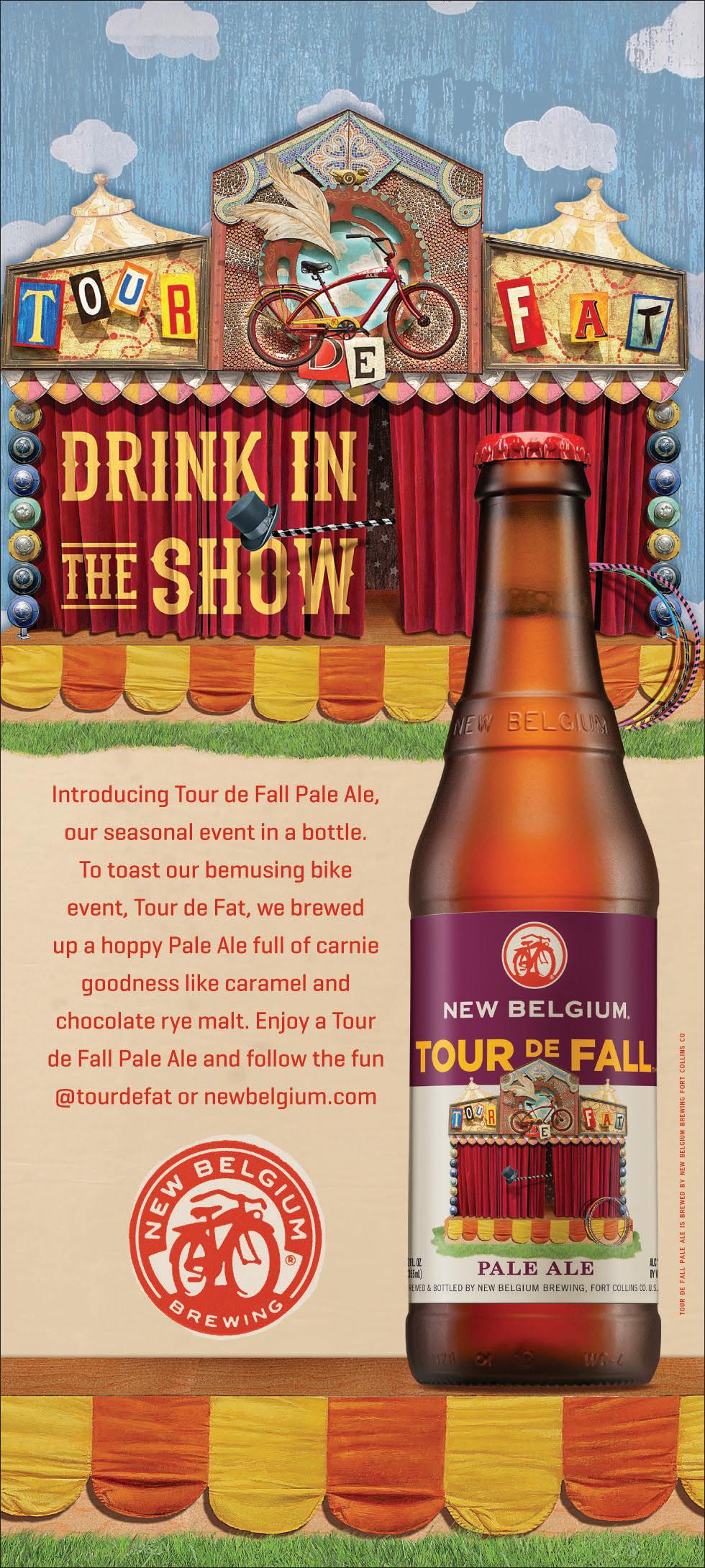
8 I SAUCE MAGAZINE I saucemagazine.com Guide to Drinking 2014
by c A r M e N troe SS er
Photo
Basement Beer Party
by stacy schultz
photo by carmen troesser
For brewers Mike Sinclair and Chris Gaglio, the decision to open Upper 90 Brewing Co., in the basement of a restaurant was part personal, part business. The longtime friends have been making beer since 2009, when they made a New Year’s resolution to take their newfound love for craft suds into their own hands.
“It came about kind of as a dream to do something for ourselves instead of working for The Man for the rest of our lives,” Gaglio explained. Once the rave reviews reached beyond family and friends – and piqued the interest of the elites among the local food scene – they entered brewing competitions and began winning ribbons. With accolades under their belts, they set to work on a business plan.
Meanwhile, bartender TJ Vytlacil was thinking up the business plan for his next move. Vytlacil, who opened the members-only Blood & Sand in 2011, was setting the gears in motion for a lunch spot in Citygarden named Death in the Afternoon, which opened this June.
How did their plans converge? Well, Vytlacil and Sinclair go way back. When Vytlacil was about 12, he and his mother moved to St. Louis from Denver for her job, where she worked with Sinclair’s wife. The two families became fast friends. “TJ and I (played) Nintendo and roller hockey in my basement and street hockey out on the church parking lots,” Sinclair said. “They’ve just been really close friends of the family since. He calls me his godfather now. That’s an honorary title, which I’m very proud to accept.”
Sinclair and Gaglio knew that if they were going to take the leap into entrepreneurship, Vytlacil and his business partner, Adam Frager, were the guys to do it with. “TJ brings that level of unbridled energy and enthusiasm that we feed off of because he’s very successful at it,” Gaglio said. “He’s got the smarts, and he has experienced so much in the world that we’re looking to go into. There’s just a lot
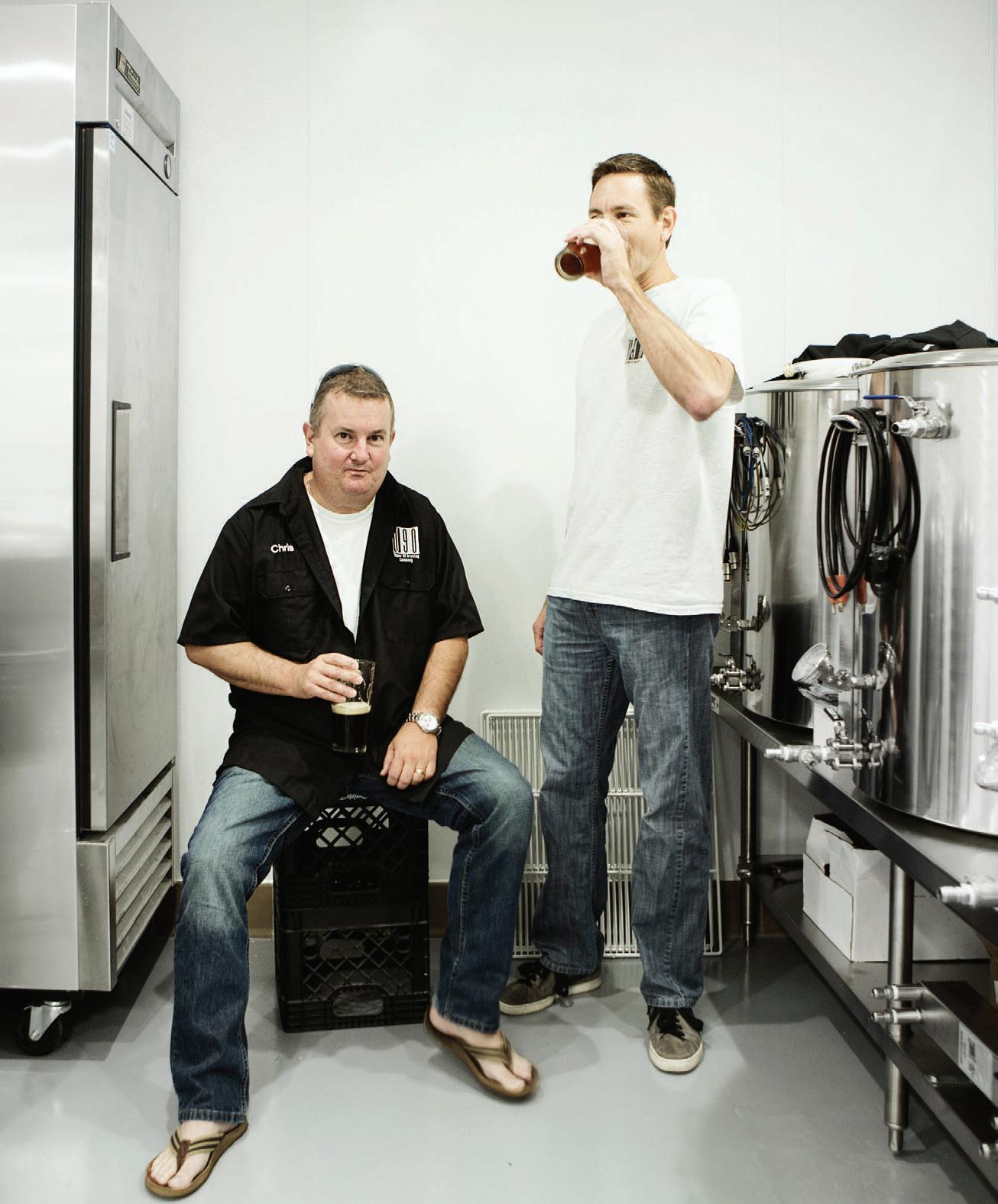
of symbiosis, a lot of good interaction between all of us, and Adam, his partner, is phenomenal, too.”
The plan is to keep their day jobs, brew on weekends, lease the basement space from Vytlacil and Frager and sell beer that’s piped up to dedicated Upper 90 tap handles at Death in the Afternoon. As for what will come out of those taps, the restaurant’s hours present a hurdle. “You don’t want to come into lunch, drink an oatmeal stout and then have to go back to work,” Sinclair explained. “So we’re trying to be aware of that and take some of what we do in the homebrew and limit that to make it something that’s sessionable – something that you can have one with lunch and go back to work and still be functional and be awake.” Look for glasses of
something lighter – Irish red ale, Kölsch and a dunkel will be among the first to hit the kegs.
For now, Sinclair and Gaglio are technically a “brewery in planning,” having marshaled their equipment and applied for the proper permits. (At press time, Upper 90 had received a federal government green light, but was still waiting on state and local permits.) Until the all-clear signal comes, they wait. And they plan. They wonder if they, like the home brewers before them who built beloved drinking holes like Civil Life, 4 Hands and Exit 6, can make their brewing dream come true. And there’s nowhere they’d rather be doing it than in the basement of a guy who used to stay up until midnight playing roller hockey – in the basement.
saucemagazine.com I SAUCE MAGAZINE I 9 Guide to Drinking 2014
Photo by c A r M e N troe SS er
From left, Upper 90 Brewing Co.’s coowners Chris Gaglio and Mike Sinclair





10 I SAUCE MAGAZINE I saucemagazine.com Guide to Drinking 2014

saucemagazine.com I SAUCE MAGAZINE I 11 Guide to Drinking 2014
Cider comes back hard
By Eric HildEBrandt
While the craft beer boom continues to brew, it’s hard to ignore the presence of its up-andcoming cousin, craft cider. Sometimes barrel-aged, generally artisanal, and often naturally glutenfree, these fermented apple beverages are being produced not only by cider-focused establishments such as Crispin, California Cider Co., and Colorado Cider Co., but also by many craft breweries as a beer alternative.
Local breweries such as Urban Chestnut and Schlafly have made hard ciders readily available to the market, while others like Crown Valley Brewing regularly experiment with recipes for seasonal releases. Looking for a sweet way to enjoy the remainder of summer? Grab some cider, find some sunlight, sit back and swill.

2012 Etienne Dupont Cidre Bouché Brut de Normandie
Unfiltered and unpasteurized, this French “cider under cork” smells of green apple, while the flavor profile packs a bittersweet punch of bleu cheese and honey. Its effervescence holds a subtle funk and natural sweetness that doesn’t linger on the palate. Fields Foods, 1500 lafayette ave., St. louis, 314.241.3276, fieldsfoods.com
Apple Knocker Hard Knocks
Fermented in American oak barrels with Belgian yeasts by Illinois cider house Apple Knocker, Hard Knocks boasts the flavors of deliciously tart apples and citrus. If you’re in the mood for something sweeter, try its cousin, Sweet Knockers. the Wine and cheese Place, all locations, wineandcheeseplace.com
Urban Chestnut Bushelhead
Wine-like, full of apple aroma and flavor with big alcohol warmth, this local cider truly is apple juice for grown-ups. Try Bushelhead on draft at Bailey’s Range with the restaurant’s cinnamon ice cream, and you will taste perfection. Bailey’s range, 920 Olive St., St. louis, 314.241.8121, baileysrange.com
Schlafly Hard Apple Cider
Complete with a robust Granny Smith apple aroma, a crisp, almost effervescent mouth feel and a slightly dry palate, this refreshing hard cider on draft at Schlafly Bottleworks is perfectly balanced for even the pickiest of cider drinkers. Schlafly Bottleworks, 7260 Southwest ave., Maplewood, 314.241.2337, schlafly.com
Ace Pineapple Cider
The California Cider Co.’s pineapple cider is deliciously sweet up front with a tart finish. The wonderful pineapple scent gives summer patio drinking a touch of the tropics. This seasonal has been flying off the shelves; if you see a bottle, nab it.
12 I SAUCE MAGAZINE I saucemagazine.com Guide to Drinking 2014
by c A r M e N troe SS er
Photo



saucemagazine.com I SAUCE MAGAZINE I 13 Guide to Drinking 2014 Photo by c A r M e N troe SS er
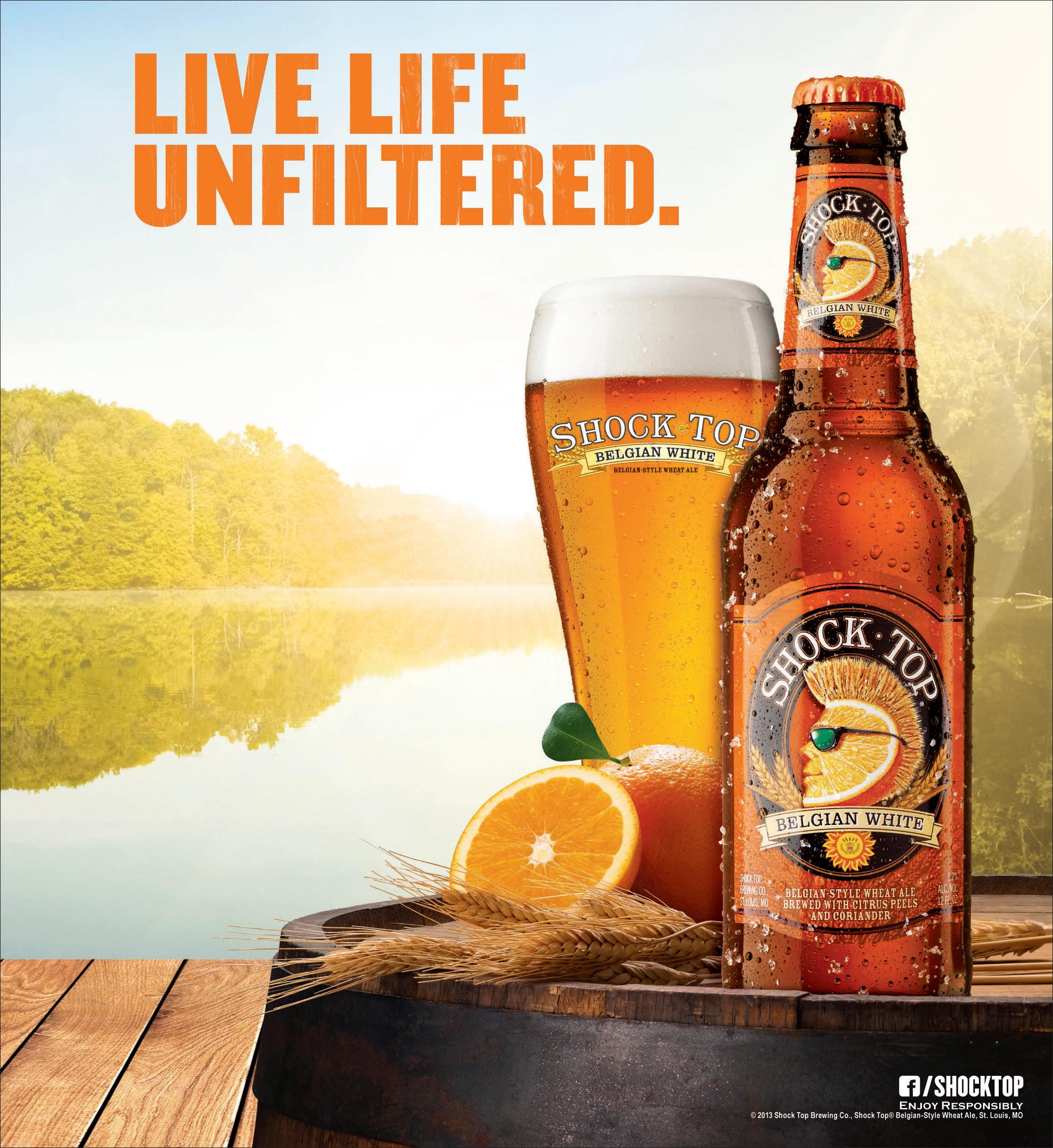
14 I SAUCE MAGAZINE I saucemagazine.com Guide to Drinking 2014 P hoto S by eliz A beth jochu M

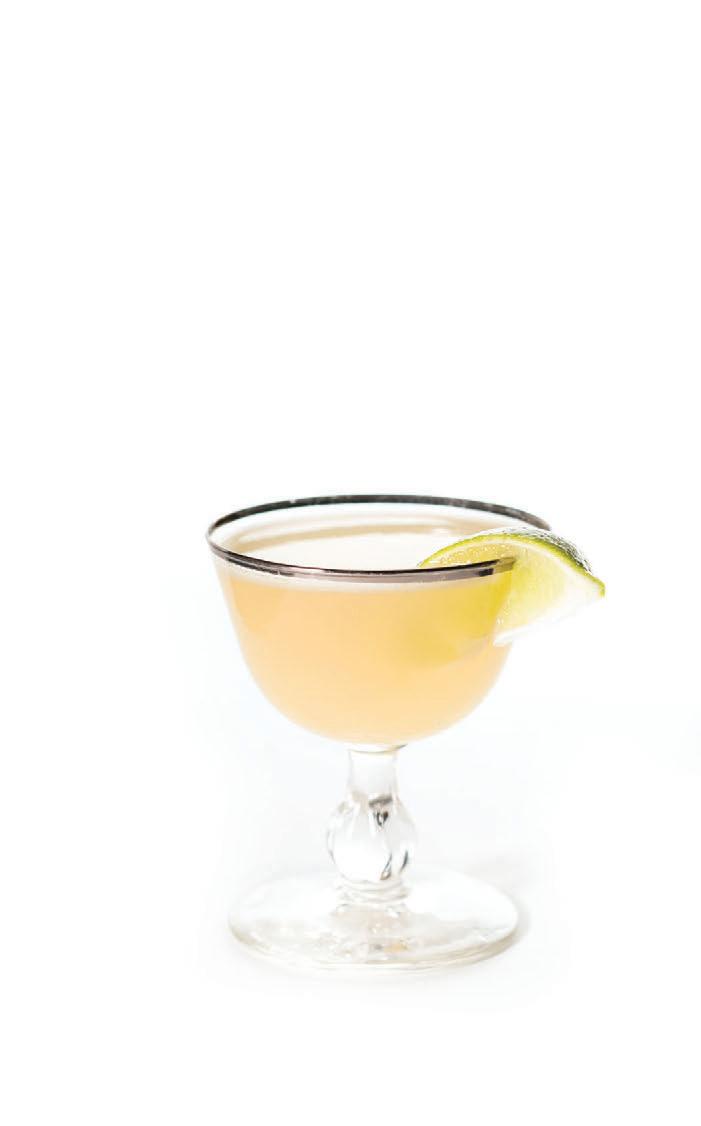
The Kilgore Me T hod
Planter’s House co-owner and crack barkeep Ted Kilgore spills his drink-mixing secrets
In my 16 years as a bartender, I have accumulated hundreds of books on cocktails, spirits and bartending in pursuit of making the best cocktail possible. While I’d found lots of differing opinions, none seemed to offer a definitive answer. Then one day, I found myself mixing five different Sidecar recipes trying to determine the “correct” one. By the end, I realized I had developed my own set of formulas and rules. These formulas offered consistent balance and structure, and placed the drink in a flavor profile range that the majority of my customers enjoyed. I’ve found that the most popular cocktails follow the “sour” formula. If you learn this formula, you can make and create a host of fabulous drinks.
Basic
sour recipe
2 oz. base spirit (gin, whiskey, vodka, etc.)
1 oz. sweet (simple syrup, liqueur, agave, etc.)
¾ oz. sour (lemon, lime, etc.)
Now that you have the basic formula, apply it to other classic cocktails:
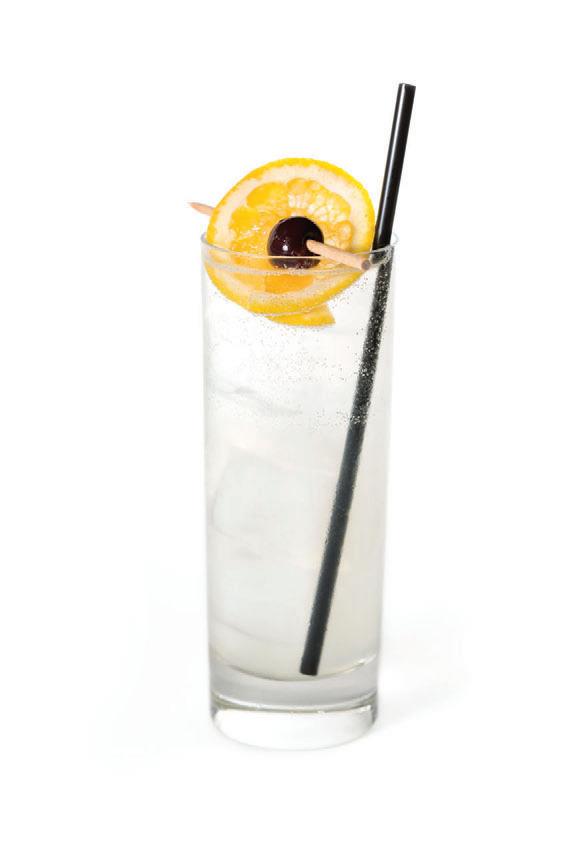
Starting to see the connection? Now that we have the formula, let’s apply my rules and method.
Start with high-quality ingredients, or at least the best you can get your hands on. The idea is to make the best possible drink you can, whatever the circumstances.
Measure ingredients (except anything carbonated or bubbly) into your shaking vessel without ice. (I like to use Oxo angled measuring cups.) Next, you’ll want a shaker big enough to hold plenty of ice and that has a clean seal. (I use two-piece metal Boston shakers.) Add cold, fresh, hard ice, as much as you can fit into the smaller half of the shaker. If using a cobbler shaker (the three-piece
variety with a small top that looks like a cap), fill it all the way up.
Now shake. The most important thing to remember is to shake a minimum of 17 seconds. At 17 seconds, you will have reached the point at which the ice and the ingredients (now diluted about 30 percent) are around the same temperature (28 to 33 degrees). The harder the shake, the more air that enters the drink, providing a lighter mouth feel.
Using a mesh strainer, pour into a chilled glass. You can fine-strain through a tea strainer if you wish to eliminate tiny ice shards – useful when serving the drink “up,” but less necessary when it’s served over ice anyway. Garnish with something fresh and pretty. Drink and (of course) repeat.
saucemagazine.com I SAUCE MAGAZINE I 15 Guide to Drinking 2014
2 oz. tequila 1 oz. triple sec ¾ oz. fresh lime juice
2 oz. gin or vodka 1 oz. simple syrup ¾ oz. fresh lemon juice Club soda
Margarita
Tom Collins
P hoto S by eliz A beth jochu M







16 I SAUCE MAGAZINE I saucemagazine.com Guide to Drinking 2014

saucemagazine.com I SAUCE MAGAZINE I 17 Guide to Drinking 2014

Super Somm S
18 I SAUCE MAGAZINE I saucemagazine.com Guide to Drinking 2014
St. Louis’ top wine students prepare to hold court by julie cohen | pho T os by ashley giese K ing
From left, Brandon Kerne, Patricia Wamhoff and a ndrey Ivanov
ou’re the beverage director at a new Italian bistro.
The owner of the restaurant has come in to speak with you about wine pairings for an upcoming five-course tasting menu, but she only has 12 minutes to spare. She informs you that the menu will cost $150 a head for food and $75 for wine. She hands you the menu, which you’ve never seen before. You hastily flip it over, only to find that it’s in Italian. She tells you each wine must complement the region from which each dish’s ingredients hail. The wines must follow the standard 200-percent price markup and you must stay on budget so the restaurant doesn’t actually lose money on the dinner. But before you begin, she also wants you to smell three different glasses of wine, all of which come from the same grape.
Then, a salvo of questions: What is the grape? Where does each wine come from? Who is the winemaker? What is the vintage? How much would each wine cost on your wine list? But back to that tasting menu. Do you have your suggestions ready? What’s taking you so long? But I hate that suggestion. Do you think I’m a peasant? You know what, just in case I change my mind, I want five alternatives, this time domestics. I also have six spirits for you to identify. Take a whiff from each.
Tense after just reading this? Now imagine this scenario is part of a real-life exam for which you have been studying for almost a year. Or as Andrey Ivanov, wine director at Elaia, Olio, United Provisions and soonto-open Old Standard described, “Imagine taking a date to a high school dance, but you’ve never been to a high school dance. You’re so nervous to dance with the date. That’s the anxiety you have during this test.” He laughed. “That, or bungee jumping.”
This sweat-inducing 12-minute scenario is one of three Ivanov experienced while taking the service portion of the master sommelier exam administered by The Court of Master Sommeliers, the most ridiculously challenging test you’ve never heard of. “If you realize you’re just waiting tables, you’re great,” said Ivanov. But, he elaborated, if you let the test get to you – if you remember the 30-plus hours a week you’ve been studying while maintaining a full-time job
and the years you’ve devoted toward The Court’s examination process – “You become that kid, seeing your date dancing with everyone else. You become that kid standing with your back against the wall, hyperventilating into a bag.”
Holding Court
In the world of wine, the most prestigious sommelier diploma comes from the uber-exclusive Court of Master
If I could have any wine in the world right now:
1990 Pol Roger Cuvée Sir Winston Churchill “One of the wines I popped open when I passed my advanced exam.” – Stephen Gitto
1780s Madeira “It went across the ocean and back a few times. One of the greatest beverages on the planet. There’s Madeira out there for sale that dates all the way back to 1715.” – Andrey Ivanov
1945 Domaine de la Romanée-Conti Romanée-Conti “One of the most famous vineyards in the world from one of the best vintages ever. It is also part of history, as this is the year marking the end of World War II. To enjoy a bottle of one of the finest wines ever made and reflect upon history at the same time would be one of those amazing moments in life.” – James Hallett
Sommeliers. Within The Court there are four levels of certification: introductory, certified, advanced and master. With a pass rate hovering around 5 percent, only 219 people worldwide have passed the master exam since the test’s inception in 1969. In 2014, only 5 out of 140 passed. Statistically, it’s easier to pass both the CPA and California Bar exams, be admitted to Harvard or play professional baseball than become a master sommelier.
But don’t tell that to St. Louis’ wine community.
Currently in the Gateway City, four people are studying for their master certification. Ivanov is one, along with Patricia Wamhoff, beverage director at the restaurants at The Cheshire; Stephen Gitto, liquor manager at the Schnucks location on Clayton Road in Ladue; and James Hallett, cellar selections manager for Major Brands. Without a master sommelier living in town and only a handful in the Midwest (with Doug Frost in Kansas City being the biggest name; “He’s our Yoda,” said Ivanov of Frost), you would think the race to become St. Louis’ first master somm would resemble some ruthless, Cold War-like competition. Instead, what I found more resembled Mister Rogers’ Neighborhood (if all the puppets drank wine).
Rather than use cutthroat tactics to prepare for the next master exam in February 2015, the four have created a study group, because, as Gitto said, “You cannot do this alone.”
Wait a minute, you might say. Does that mean we’re all “studying” when we drink wine with our friends on a Saturday night? Not exactly. From memorizing Bordeaux winemakers to drawing maps of the regions of South Africa, this study group is intense. “We’re kind of masochistic nerds in that way,” said Ivanov.
In addition to the service portion of the master exam, there is a theory component and a blind tasting. Gitto talked me through a tasting, and when he was done, I felt like I was surely in the presence of Sherlock Holmes. In 25 minutes, using the powers of deductive reasoning, test-takers must try six wines and be able to not only identify the grape varietal, provenance,
saucemagazine.com I SAUCE MAGAZINE I 19 Guide to Drinking 2014

appellation and vintage, but also explain why they smell and taste the way they do. “Say you smell ginger, but why?” Gitto asked. “Ginger can be associated with botrytis, a fungus which concentrates sugar. That fungus is responsible for some of the most famous sweet wines in the world.” For Gitto, who also holds a master’s degree in chemistry, studying has always been a part of life, but he was quick to point out that plenty of people choose not to go through The Court’s certification process, and they still know what they’re doing. “It doesn’t mean that they’re not very much part of the forefront of wine in St. Louis. You don’t have to take a test to be good at what you do,” he said.
“But for people who do,” he added, “It does take an awful lot.”
Paying it back(ward?)
Although there are just four “masochistic nerds” currently studying for the master exam, there is a whole fleet of local beverage professionals helping each other out as they study for certifications, competitions and simply for the pursuit of knowledge. “You can find some sort of tasting group any night of the week,” said Brandon Kerne, certified sommelier and wine director at Bar Italia. “If I wanted to tonight, I could find someone who would want to run through the Grand Crus of Burgundy.”
For instance, in late January of this year, a server from Cielo at the Four Seasons named Patrick Olds walked into 33 Wine Bar and
When a corkscrew is nowhere to be found:
“The classic: Jab the bottom of a ballpoint pen into the cork and just force the cork into the bottle. You get a floating cork but you get access to the wine. But my favorite thing to do in the entire world is sabering. All you need is a butter knife, not a sword.”
– Brandon Kerne
“I have a corkscrew in my car, every purse, three or four in my kitchen drawer.”
– Patricia Wamhoff
“There’s the shoe trick. I’ve done it successfully once. You put the base of the bottle in the heel of a rubber-soled shoe, bang the hell out of it against a tree until the cork comes out. I would add a ‘Don’t try this at home.’”
– Matt Dulle
mentioned he was taking the Court’s certified exam in two weeks. A stranger announcing to a bar his plan to take a test sounds like the perfect way to be ignored, but instead the opposite occurred. For the next two weeks, Kerne, who at the time was 33’s wine director, kept the bar open late so Olds could come in for afterhours study sessions. Ivanov and Matt Dulle, certified sommelier and beverage director at the St. Louis Club, joined in, too. “It was like a NASCAR pit stop,” Kerne said.
“Andrey did the same thing for me as we did for Patrick,” Kerne explained, recalling when he took his certified exam last year. “It’s a lot of paying it forward. Paying it backward? Whatever that phrase is.”
“I didn’t deserve it,” Olds recounted. “Andrey, during the busy time at Olio, brought me in the back room, went over theory, tasting. They were all so good to me.”
Olds passed his certified exam and now continues to look for ways to help the wine community. “Whenever I get something new and cool (at Cielo), I want to call Brandon and give it to him. That’s the way we are working.”
“It’s not all about the examination,” Kerne said, reiterating that professionals don’t need The Court’s blessing to prove they’re knowledgeable. “But once you get someone certified, they’re in the groove. They’ve chosen wine as a profession. And with more professionals, there is more diversity on the shelves.”
Wamhoff, whom Ivanov and Kerne consider the godmother of the St. Louis sommelier scene, agreed. “If you went into a restaurant in the mid-’90s, you were handed a wine list that had been printed up by a major distributor because the restaurant didn’t know anything about wines,” she said, adding that most restaurants around town had the exact same wine list. In fact, when Wamhoff moved here in 1993, she recalls being one of only two certified sommeliers in the entire city. “Since there was a lack of knowledge all around the industry, the importers were reluctant to send any of the great stuff here.” Now, she sees St. Louisans who are not only more knowledgeable about wine, they’re hungry for it. “There has definitely been a progression in the last 20 years. If you walk into Schnucks and Dierbergs, you can get really great wine now. That wasn’t possible five, 10 years ago. It’s a trickle-down effect.”
“Whether I think the pinot noir I’ve chosen is better than the other guy’s doesn’t matter,” Kerne said. “It’s the passion. The more we can connect the consumer to the wine they’re drinking, the better we will be as a wine city.”
In the St. Louis wine scene, it looks like a rising tide does indeed lift all boats, as the adage goes. But there must be some sort of competitive edge.
“It’s certainly competitive,” Dulle said. “It’s (as) competitive as anything I’ve ever seen, but out of personal respect.”
“Anyone who says they don’t want to be a master sommelier because there’s so few in the world is flat-out lying,” said Ivanov. “But when you have a group of people pushing you, making sure you’re getting better, it’s so much more rewarding. Good things happen, not just to you but for everyone.”
20 I SAUCE MAGAZINE I saucemagazine.com Guide to Drinking 2014

The wine I love drinking any old Tuesday:
2013 Valle dell’Acate Il Frappato “Tastes like pinot noir and fresh cherries. It’s a pinot noir written in calligraphy.” – Brandon Kerne
2012 Argyle Pinot Noir “Soft, feminine and a cabinet full of baking spices. Delicious by itself or paired with fish, stewed meats or pasta. Elegance in a glass.” – James Hallett
2012 Domäne Wachau Grüner Veltliner Federspiel Terrassen “It’s outstanding and only about $20.” – Patrick Olds
saucemagazine.com I SAUCE MAGAZINE I 21 Guide to Drinking 2014



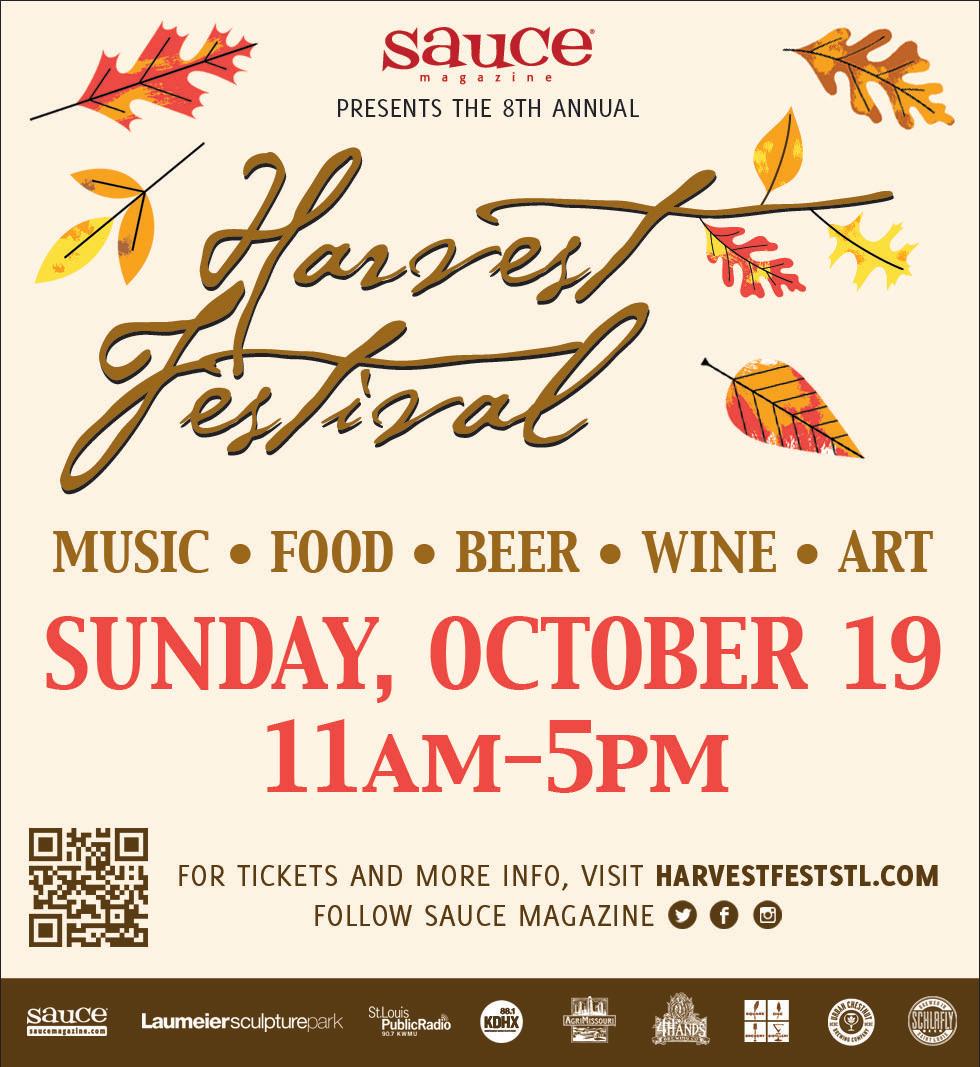
22 I SAUCE MAGAZINE I saucemagazine.com Guide to Drinking 2014





saucemagazine.com I SAUCE MAGAZINE I 23 Guide to Drinking 2014
10 reasons to drink with Femme Ferment

Close your eyes and picture your friendly local brewer. Odds are he’s a young male sporting a beard to rival Jason Motte’s. In fact, that same guy can be found populating craft beer bars, breweries and festivals around town, sipping pints with his like-minded fellows. Beers and bros go hand in hand, but a handful of beer-slinging and -brewing St. Louis ladies are pouring themselves a pint and declaring their love for their favorite beverage, too. The misconception that women don’t like beer, or aren’t involved in its production, is what prompted Katie Herrera, Libby Brown, Kristen Chalfant and Colleen Kirby to launch Femme Ferment, an organization dedicated to promoting the role of women in the local craft brewing scene. Since launching in May, Femme Ferment has popped up at the St. Louis Brewers Guild Heritage Festival, participated in St. Louis Craft Beer Week and created its first collaboration beer with Charleville Brewing Co. It all started with a monthly get-together filled with shop talk, beer nerdiness and laughter. Here are 10 reasons why anyone –lady or gent – should drink with Femme Ferment:
It’s the third Tuesday of the month, and there’s not a glass of wine or vodka cranberry in sight.
When you can’t decide what to drink next, ask the woman to your left. Or right. Or behind the bar. Really, anyone within earshot can guide you to the perfect pick.
When one person orders a sour beer, everyone clamors for one. Especially if that sour is New Belgium’s La Folie.
Most of the women you meet are named Katie, Kate, Catelyn or a variation of that trendiest of ‘80s baby girl names.
The petite Katie behind the bar is also the only person her friends trust to properly tap kegs at parties.
Members are as dedicated as mail carriers. Despite that many in the Femme crew caught the same cold last month at Great Taste of the Midwest beer festival in Madison, Wisconsin, their August happy hour took place as scheduled.
Wedding diets may exclude dessert, but never beer.
Nearly every woman present is a bar manager, bartender,
brewer or other industry pro, and someone can spout off the ABV, IBU and brewing technique of just about everything on tap.
Those bearded guys often swing by during happy hour for a pint, too, and everyone gives each other some good old-fashioned ribbing – in the most loving way, of course.
You left the bar with invites to four upcoming beer festivals you’ve never heard of and are already tagging your photos of the night with #3 TFF (translation: Third Tuesday Femme Ferment).
– catherine Klene
24 I SAUCE MAGAZINE I saucemagazine.com Guide to Drinking 2014
illu S tr A tio N by vidhy A NA g A r A j AN



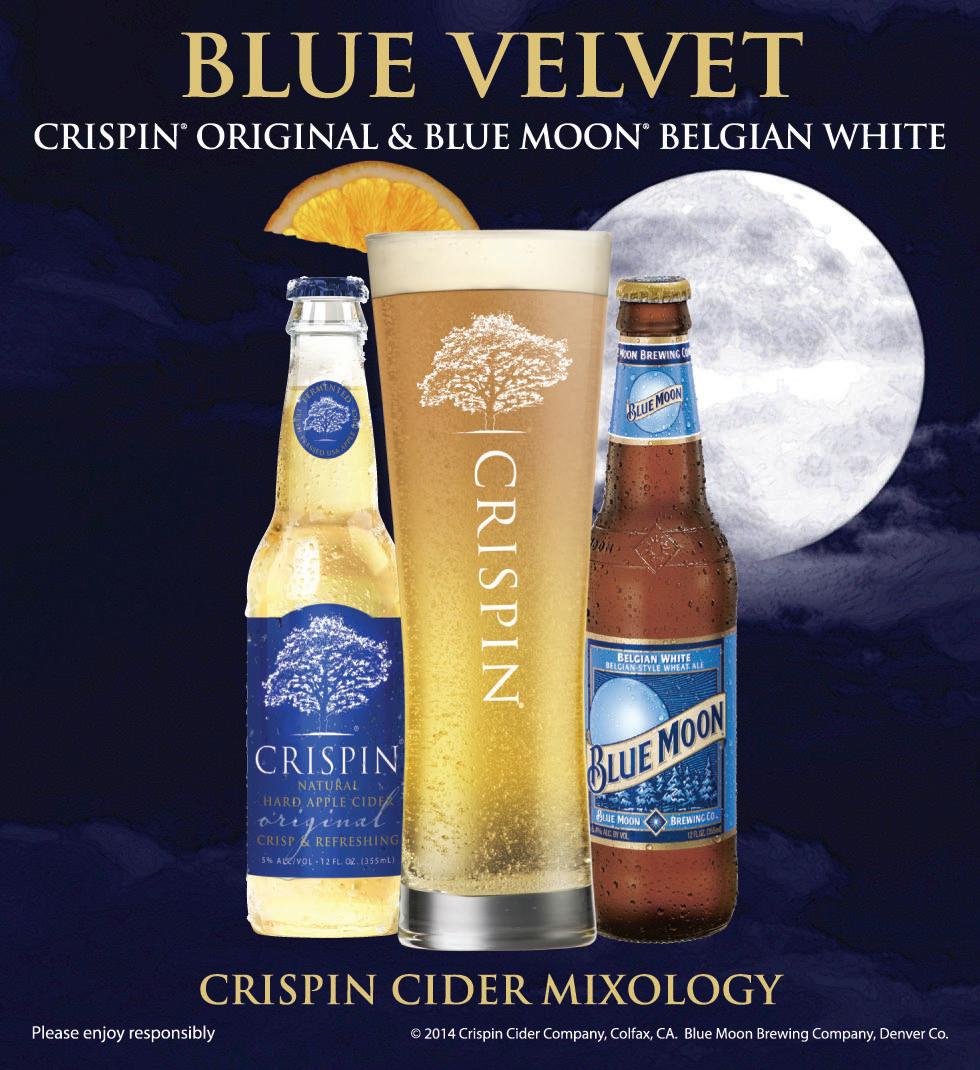

saucemagazine.com I SAUCE MAGAZINE I 25 Guide to Drinking 2014 illu S tr A tio N by vidhy A NA g A r A j AN
The old-timers: Drinking bourbon, ol D s C hool
by Michael RenneR

Old Bardstown Black Label 90
When wine doyen Robert Parker gave it 94 points and compared it to Pappy Van Winkle’s 20-Year, people went nuts for this candy corn-sweet whiskey; think butterscotch and syrupy cinnamon. It’s not bad with ice on poker night, but otherwise, mix it. $18. randall’s Wine & Spirits, 1910 S. Jefferson ave., St. louis, 314.865.0199, shoprandalls.com
There’s a revival of the American-born brown spirit called bourbon whiskey. The top shelves are flooded with the pricey stuff, from new-wave craft whiskey to bulk booze resold in fancy bottles. But when it comes to parsing price and quality, the equation isn’t always linear. Often overlooked are the ones toward the bottom shelf, the ones our grandfathers drank, the ones with “old” in their names. I drank them all because, frankly, it sounded like fun. Here’s what I learned: These golden-aged titans of bourbon are too quickly judged and too easily dismissed. Besides the dreck (Old Forester may as well be wood varnish), there are some damn good shoestring whiskies rivaling much of the overpriced corn juice on the market.
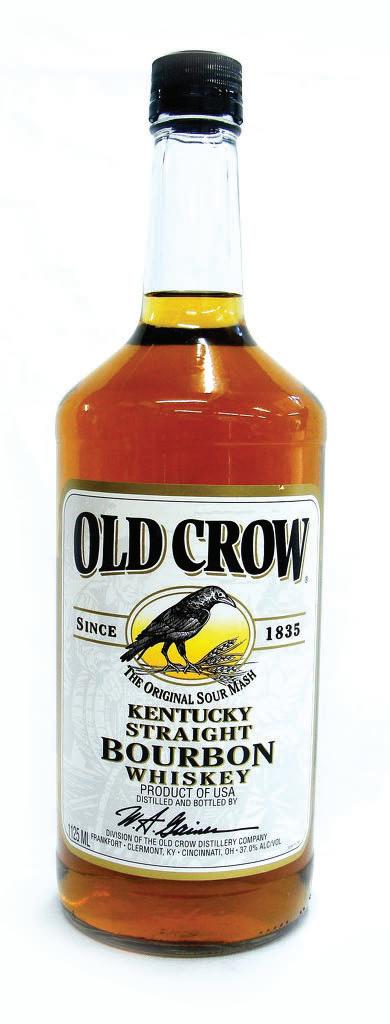
Old Crow
It may be a shadow of its former self since the days when Ulysses S. Grant and Mark Twain drank it, but both the 80- and 86-proof bottles are good values. The former is floral and peppery, the latter, more complex with a quick, minty, spicy finish. Good for mixing. 80-proof: $8; 86-proof: $20. Friar tuck, 9053 Watson road, crestwood, 314.918.9230, friartuckonline.com

Old Grand-Dad
The “Grand-Dad” was Basil Hayden, a name bourbonites bow down to. It’s dry and astringent with tons of spice from the high rye, but it has a hit of up-front honey and oak followed by a cinnamon candy and clove finish. This one is best on the rocks or mixed. $17. arena liquor, 1217 Hampton ave., St. louis, 314.645.6644, Facebook: arena liquor

Old Taylor
If you could liquefy popcorn, this is what it would taste like. Old Taylor smacks of caramel-vanilla sweetness fading to a lingering peppery-ness. Did I mention lots of corn? It’s best mixed or on the rocks. $11. lukas liquor, 15921 Manchester road, Ellisville, 636.227.4543, lukasliquorstl.com

Old Weller Antique
When balanced by a splash of water or an ice cube, it’s a sturdy sipper full of honeyed fruit, citrus and cinnamon all the way to its soft, long finish. Mellow from wheat, it’s smooth and sweet. Some call it a thriftier version of Old Rip Van Winkle while others compare it to the rare Pappy Van Winkle’s 23-Year-Old. $24. the Wine and cheese Place, 7435 Forsyth Blvd., clayton, 314.727.8788, wineandcheeseplace.com
26 I SAUCE MAGAZINE I saucemagazine.com Guide to Drinking 2014

saucemagazine.com I SAUCE MAGAZINE I 27 Guide to Drinking 2014




















 Ligaya Figueras Executive editor
Ligaya Figueras Executive editor







































































































































































